Plankton Trail
The plankton trail is the new tool of the participative objective plankton program.

océanopolis proposes a playful scientific walk to discover plankton in augmented reality. These "virtual fishermen" equipped with their smartphones and thanks to the mobile application "Street science" will be able to collect plankton and discover the richness of the roadstead of Brest.

To play, the walkers go on the mobile application and choose "objective plankton in the roadstead of Brest", they are then invited to scan 10 signs positioned from the statue "memory" to the beach of Moulin Blanc.

The planktonic organisms will reveal themselves to the eyes of the participants in augmented reality. Among all the species present is an intruder, can you guess which one ?
Expedition Arvik Ocean
This Sunday, April 30, will be held at the visitor's pontoon of the Moulin Blanc Marina, the departure party of the Arvik Ocean Expedition. The public will be welcomed from 2 to 5 pm.
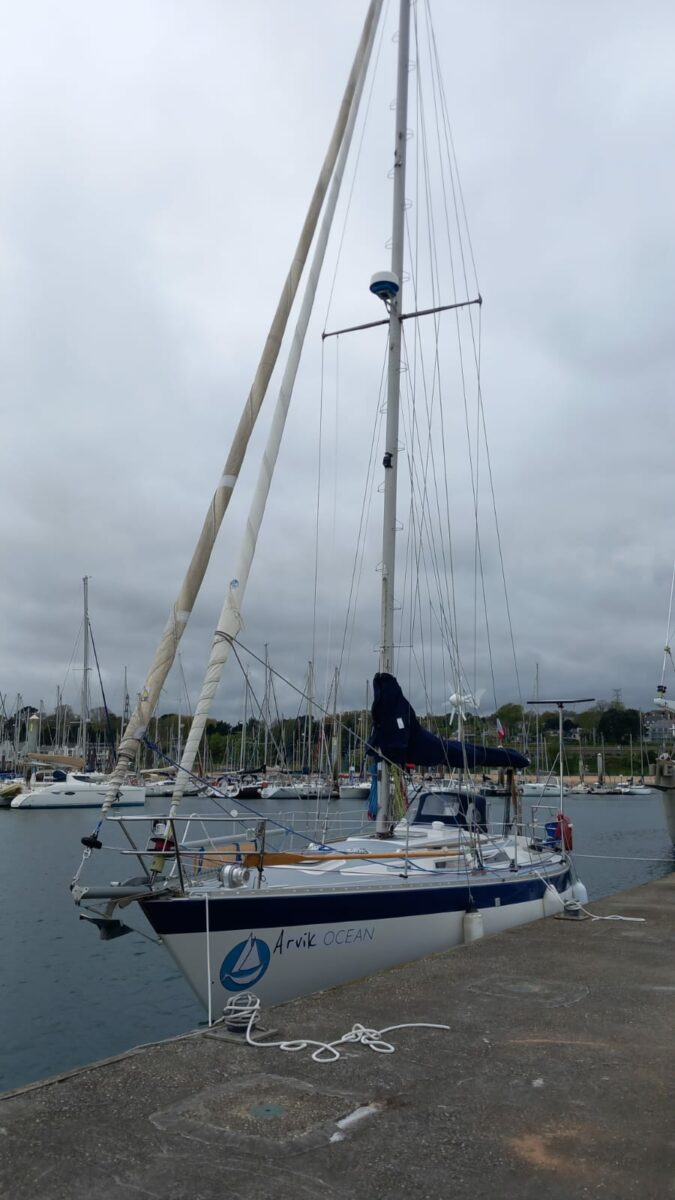
"Whale Being" project
Cetaceans are, nowadays, more and more threatened by fishing, this expedition aims to find solution in Northern Europe.
An observation
Cetaceans are now threatened with extinction. Indeed, the number of strandings of marine mammals is clearly increasing and no concrete measures are taken to safeguard them. Approximately 400 dolphins have stranded on our coasts since December, and more than 500 000 cetaceans are victims of fishing gear every year.
The mission
The main goal of this mission is to contribute to research to understand the impacts of fishing on cetaceans and to document the actions of two NGOs (Sussex Dolphin and Whale Wise) in Northern Europe.
The sailing boat Arvik Ocean will embark the teams of the NGOs to facilitate their actions. They will exchange information to better understand the stakes and impacts of the cetacean fishing and document the actions taken. They wish to transmit their discoveries to the general public.
The routes
- April - May : departure of the expedition, France
- may : mission with Sussex Dolphin, England
- July : mission with Whale Wise, Iceland
- September : end of the expedition, return to France
To follow the mission
Social networks :
- Instagram : @arvikocean
- Facebook : @arvikocean
Website :
Contact :
- Mail : crew@arvikocean.org
"PHENOMER" PROGRAMME : PARTICIPATIVE SCIENCE
The ifremer centre makes a call to the public to report green microalgae blooms on the Brittany coast. Indeed, this phenomen has already occurred in previous years, but never so early.
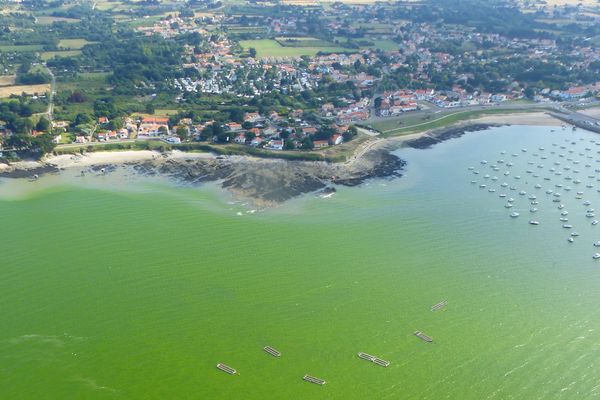
A "BLOOM"
This is an evocative name for a phenomen that can be surprising when walking along the coast. It is nevertheless exceptional, occuring in spring when the sunshine and water temperature favour the growth of microalgae. This phenomen is potentially harmful for marine fauna.
The appearance of this green, red or brown water is unpredictable. Hence the importance of reporting this phenomen as soon as possible to the Ifremer scientist so that he can take a sample or call 02.98.22.44.99.
"We encourage citizens who see coloured water to take a small quantity in a bottle and bring it to the nearest Ifremer station or relay structure as soon as possible", Anne Donner, coordinator of the Phenomer preogramme.
Places in the city centre of Brest
During a walk in the city center of Brest, you can admire many unusual monuments. The street of Siam itself is a nice demonstration. This completely pedestrian street will allow you to stroll between the numerous stores or to sit by one of the many fountains.
The fountains of Marta Pan
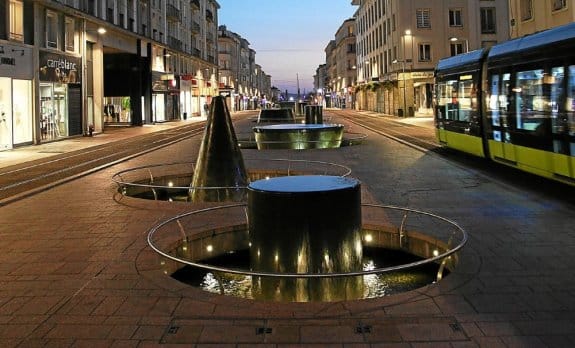
The fountains show the will of the municipality to embellish the city of Brest. Fountains made of black granite from South Africa are a good way to refresh oneself during good weather.
Door of the old Guépin barracks
As you continue your walk you may come across the door of the old barracks of Brest. This emblematic element of the Brest panorama represents the old city and a part of its history.
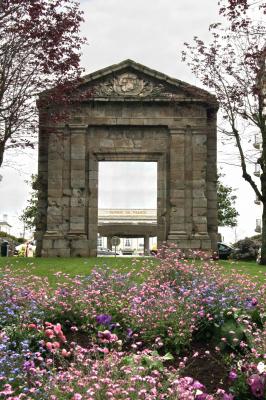
Commemorative stele
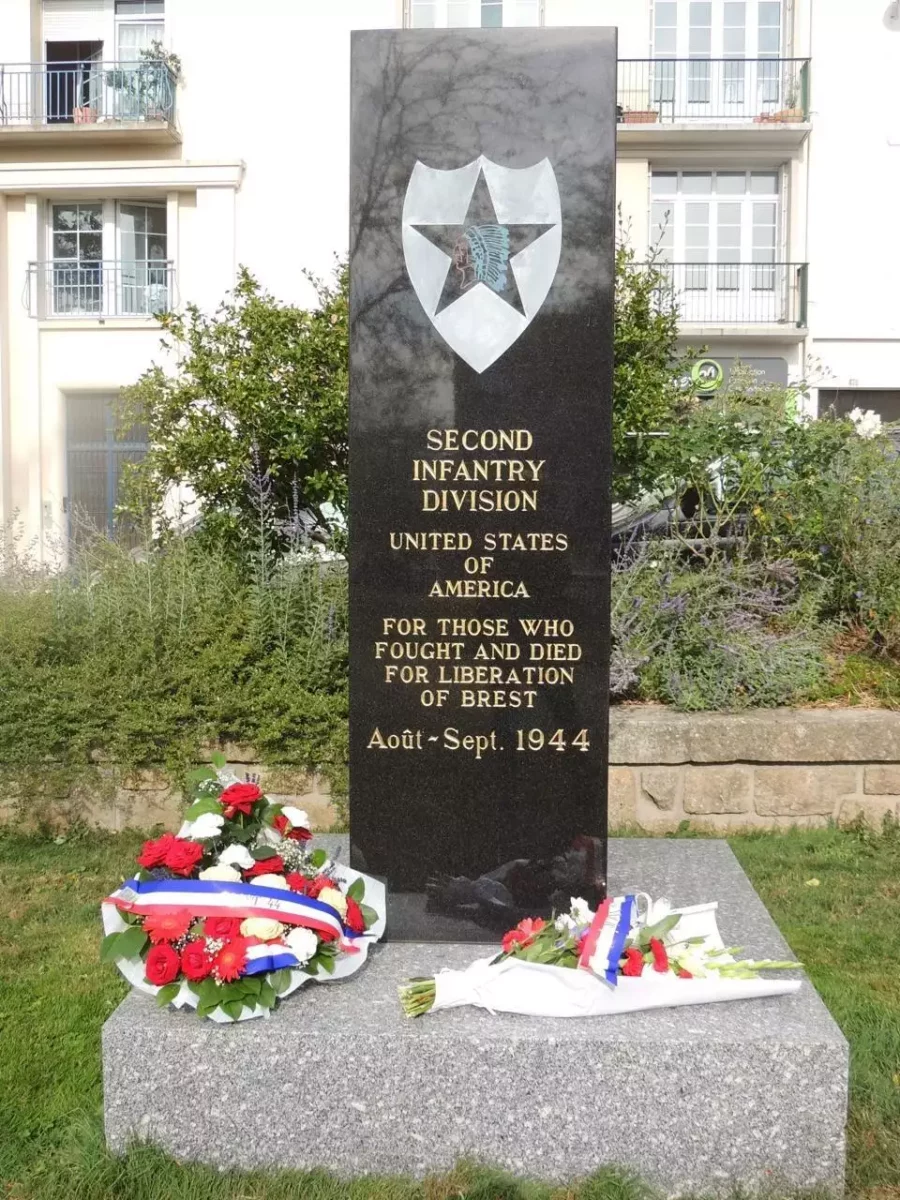
Located at the entrance to a large square that is pleasant for relaxing or playing with children, this stele commemorates the 29th american infantry division.
The Bazeilles Square
This pretty square will allow you to admire a panorama on the arsenal of Brest, nice new infrastructures will allow your children to play, and remains of the old Fautras barracks will let you imagine the old Brest.
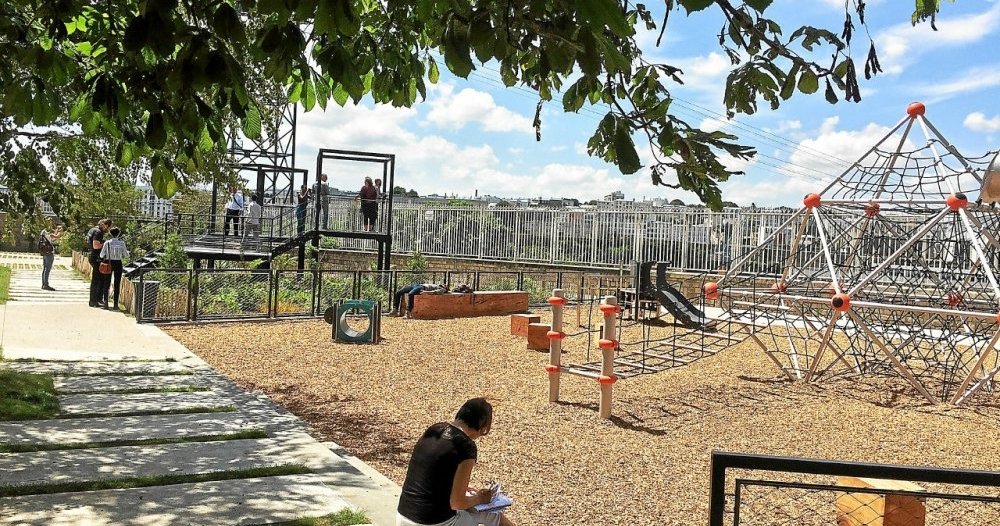
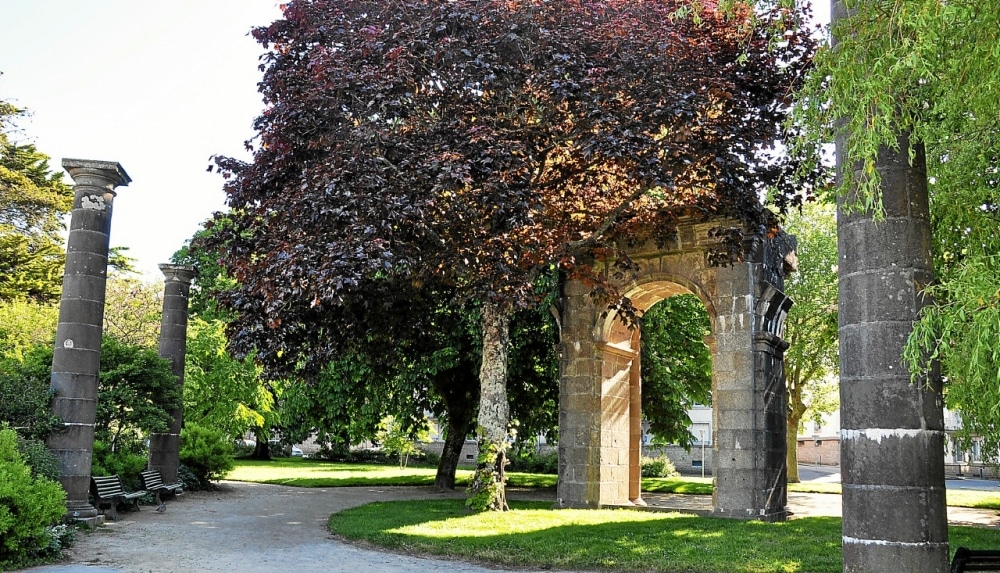
The empathetic tree
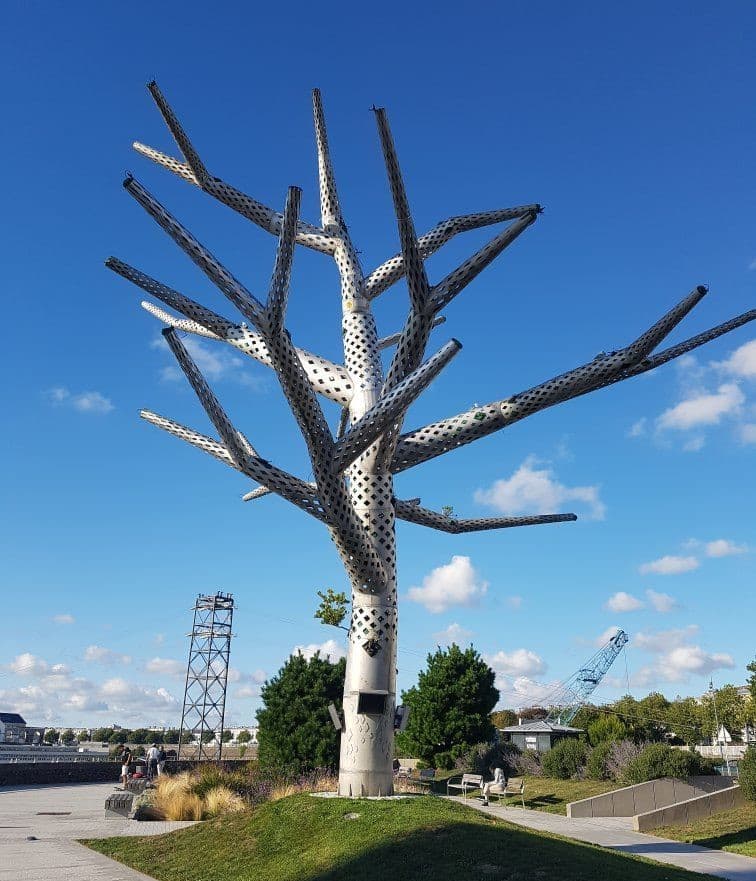
Modern réalisation of the Brest infrastructure, this tree strewn with plants wants to bring back the nature in the city center.
Monument to the dead
A monument to the fallen that leads the way to place de la Liberté.
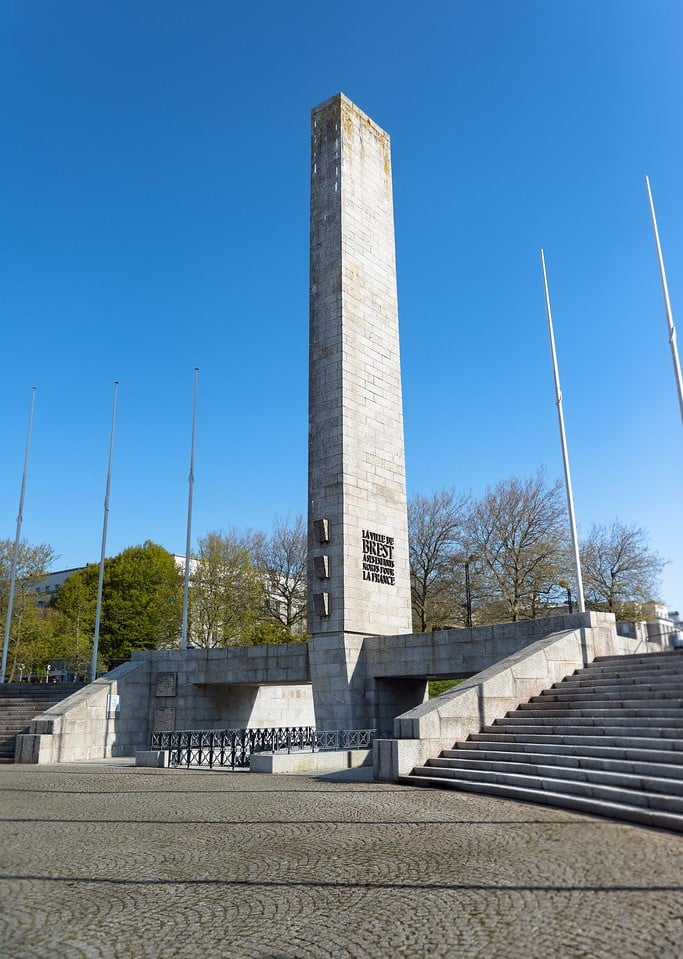
place de la Liberté
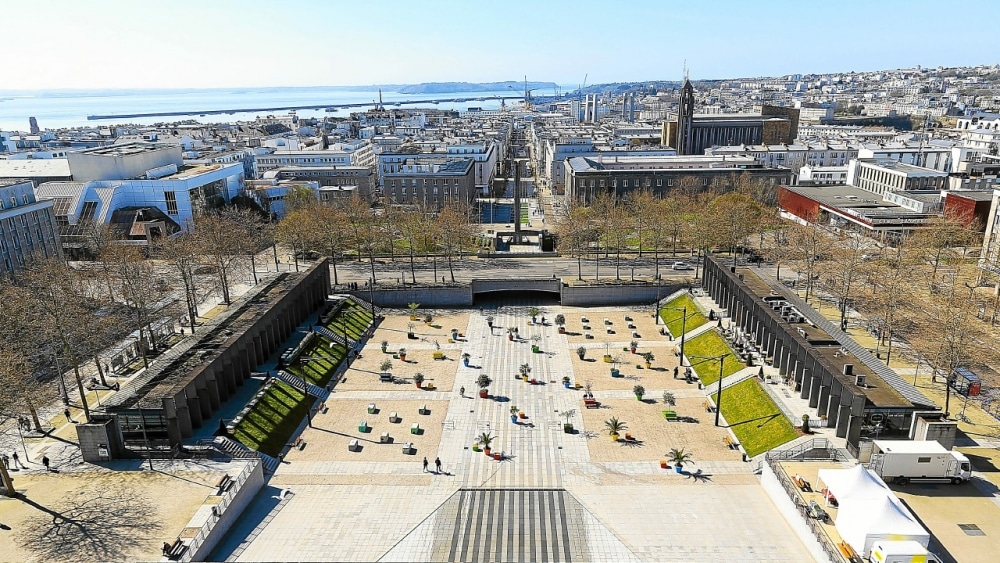
Updated to make it more accessible and warm, this place (which name literally means "Freedom square") will welcome you with pleasure to rest in a green space, or to have a meal in one of the restaurants around.
Kennedy garden
If you like skateboarding or just walking, this garden is perfect for you. With the inauguration of a brand new skate park this garden knows how to be updated and revitalise.
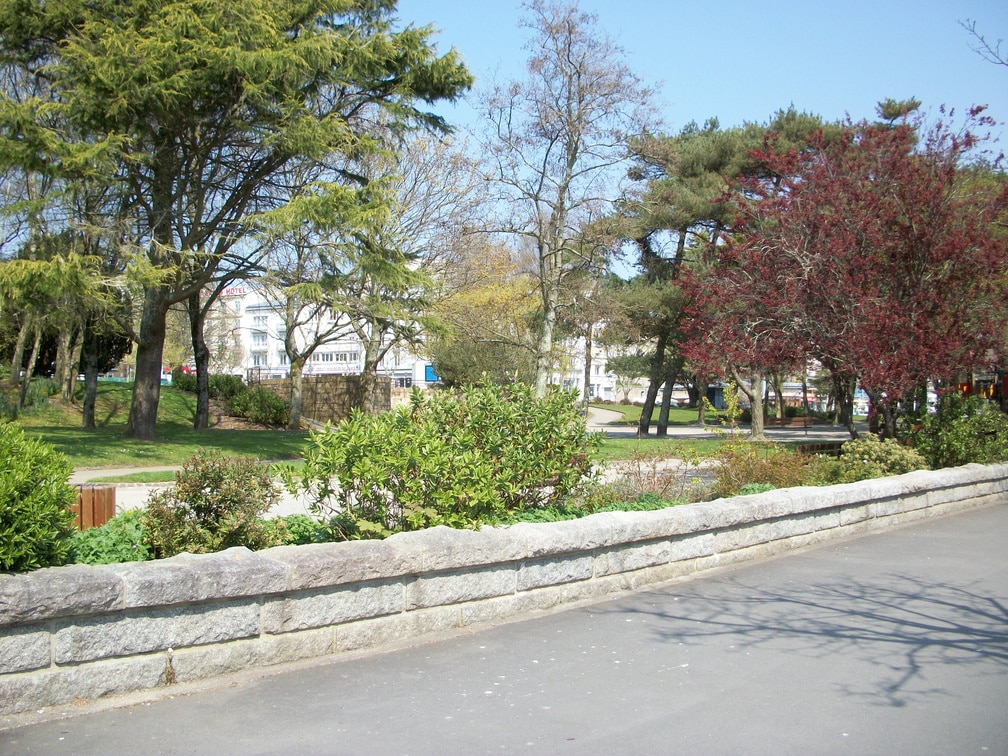
Maison de la Fontaine (Fountain House)
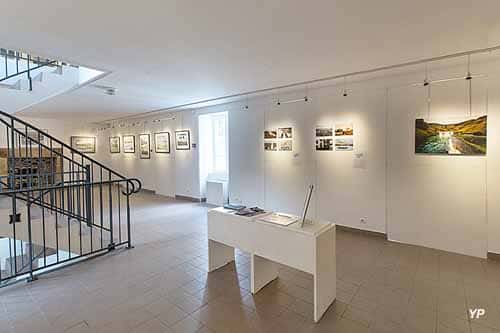
Come and discover one of the rare vestiges of the old Brest where exhibitions, meetings with artists and artistic residences are organized.
Cable car
Ideal if you want to cross the riverbank quickly, this cable car joins the two banks and will drop you off in the heart of the Capucins. Enjoy the breathtaking view during your trip.
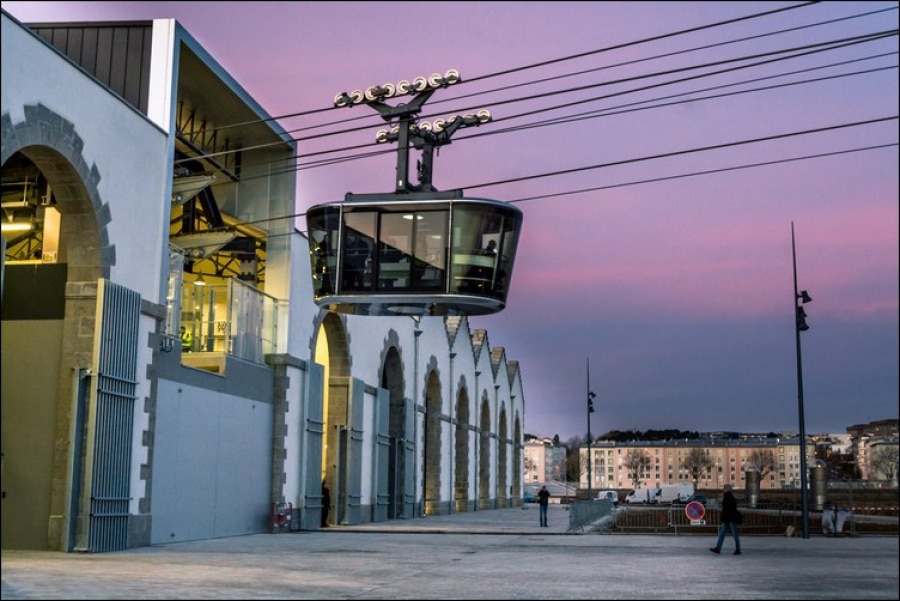
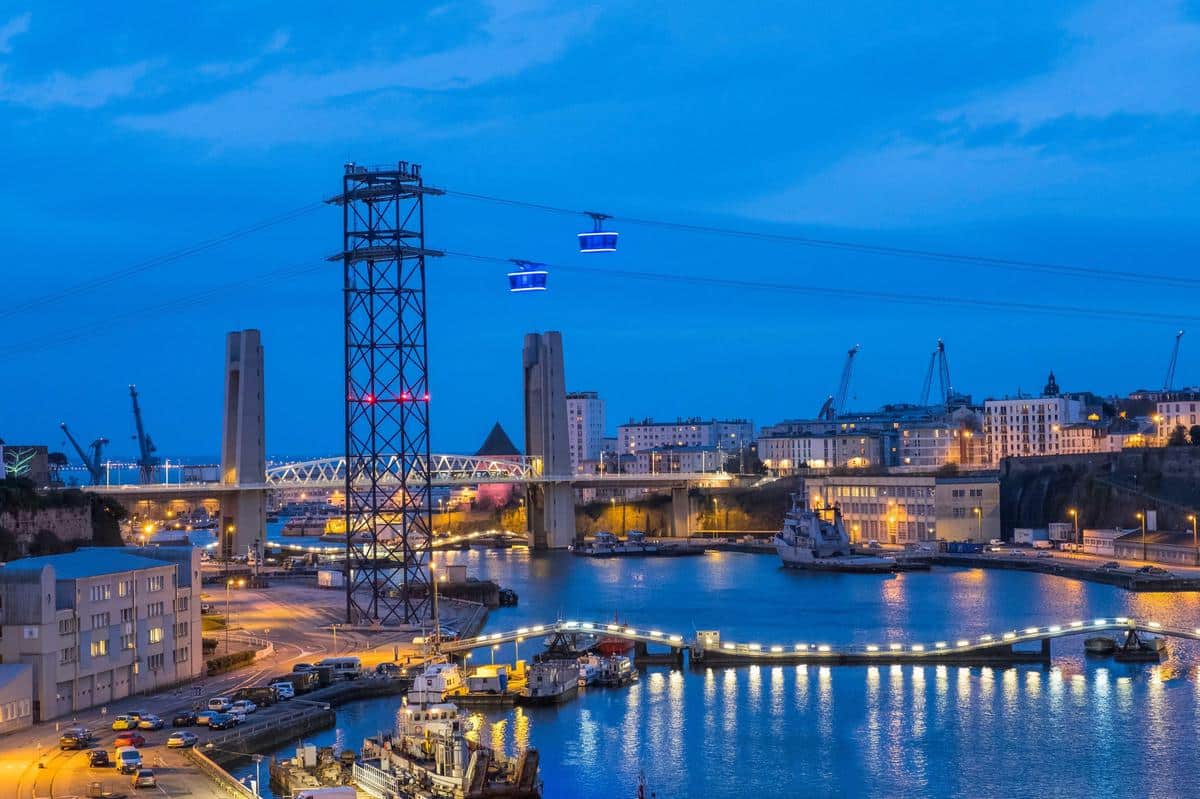
Ateliers des Capucins
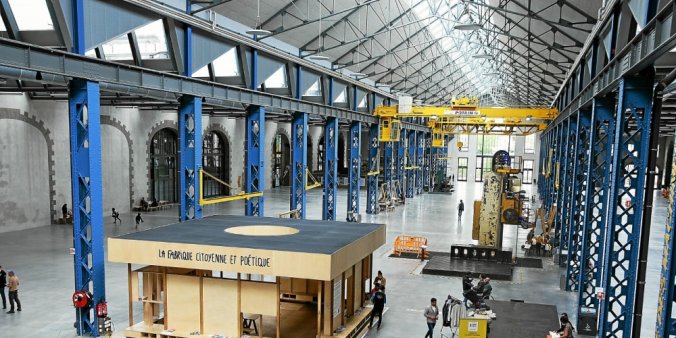
Located in a former military workshop that has been completely renovated, this building has kept the charm of the past with the machines still visible and large relaxation areas. Several small shops have been set up here, as well as a library, a café-restaurant and more recently a cinema. Its belvedere offers a breathtaking view of the Penfeld.
It is one of the must-see places in Brest.
Bridge of recouvrance
Overlooking the arsenal and the military port, it connects the bottom of the rue de Siam to the Recouvrance district. It also offers a beautiful view of the Brest arsenal.
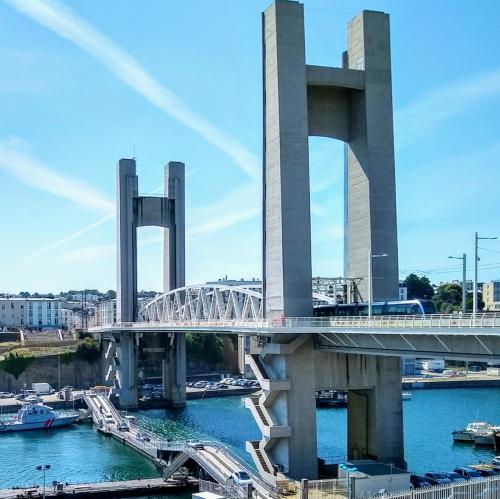
Tanguy tower
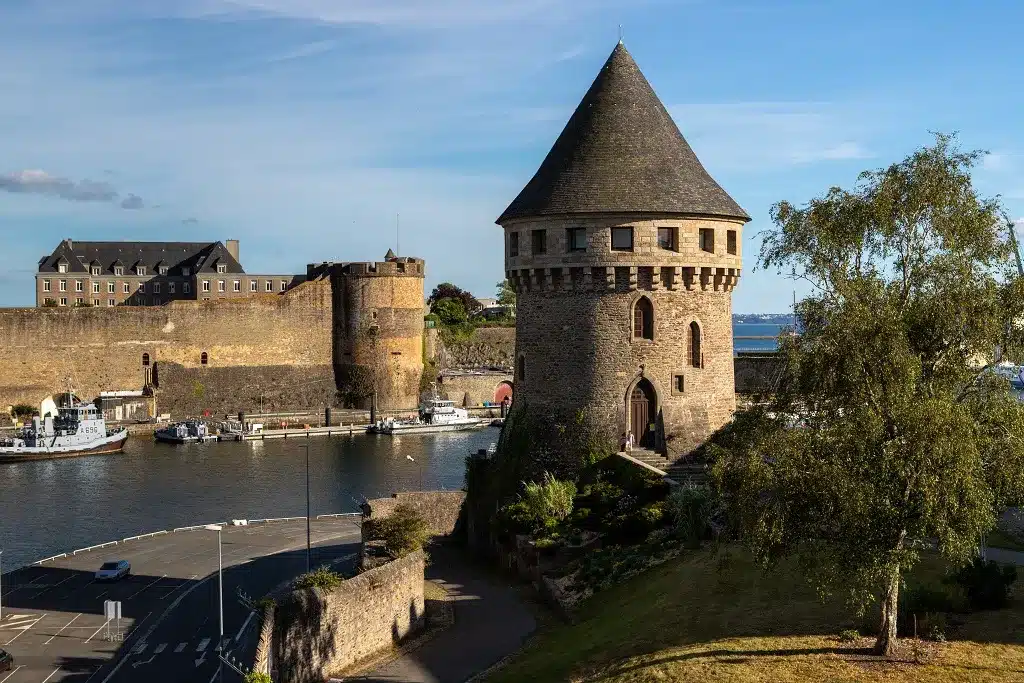
Built in the 14th century on the banks of the Penfeld, the Tanguy Tower proudly faces the castle of Brest. Today, it houses dioramas by Brest artist Jim Sévellec, which will allow you to discover the great moments of the history of the city, and the daily life of its inhabitants.
Garden of explorers
Ideal for a short walk, this garden will allow you to stretch your legs while enjoying an exceptional view of the Penfeld and the harbor of Brest.
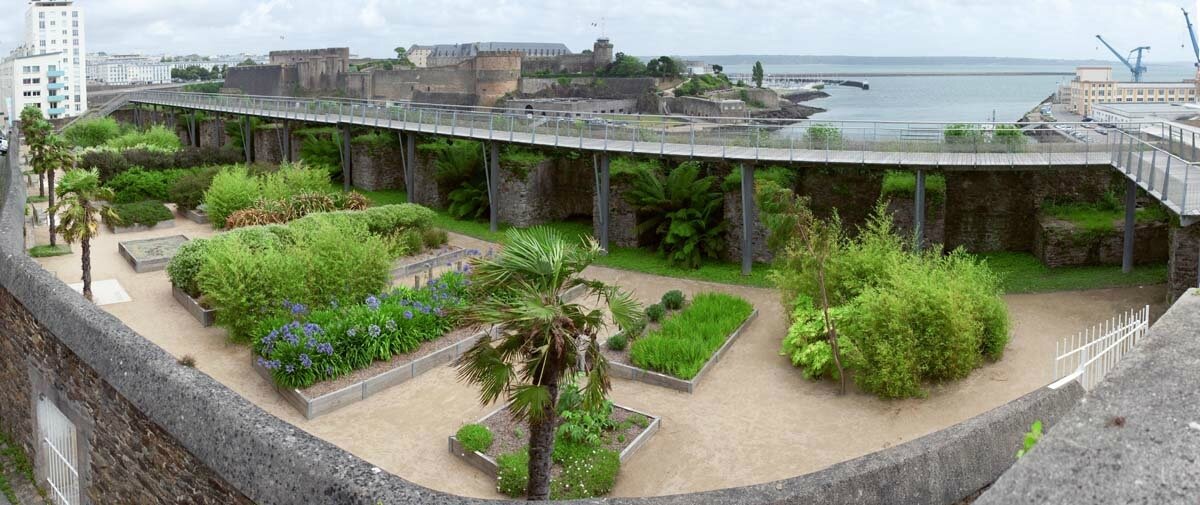
Saint-Malo street
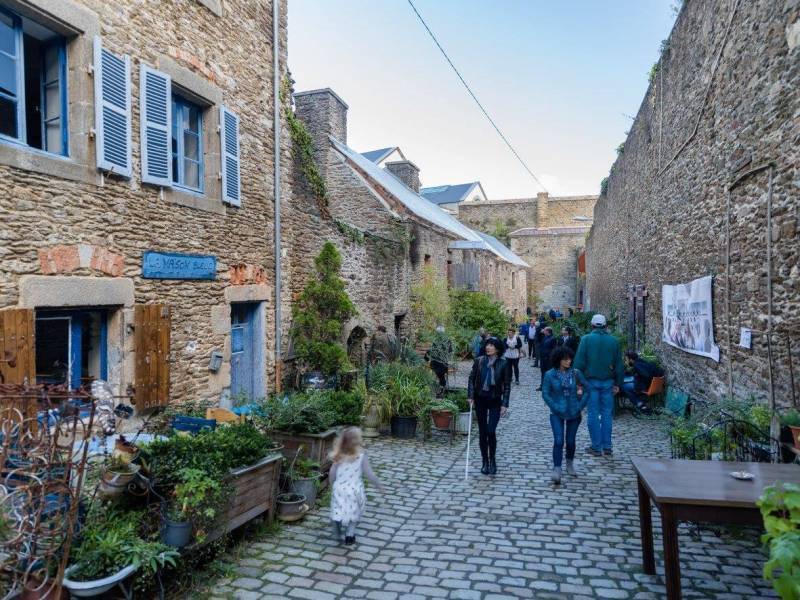
Located below the plateau des Capucins in the Recouvrance district, the Saint-Malo street is the only trace of the old Brest.
The paved street runs alongside old traditional Breton houses dating from the 17th century, and a 19th century wash house. As for the Madeleine courtyard, it was home to the Refuge Royal which saw the so-called Belle Tamisier pass through its walls.
Today, the association Vivre La Rue offers cultural and musical events not to be missed.
Sadi Carnot shelter
The Sadi Carnot shelter is a place of memory of the Second World War, during which it was the main underground shelter.
Unfortunately, on the night of September 9th 1944, several hundred people from Brest were killed in an explosion. Today, the Sadi Carnot shelter is an exhibition space that will not leave you indifferent.
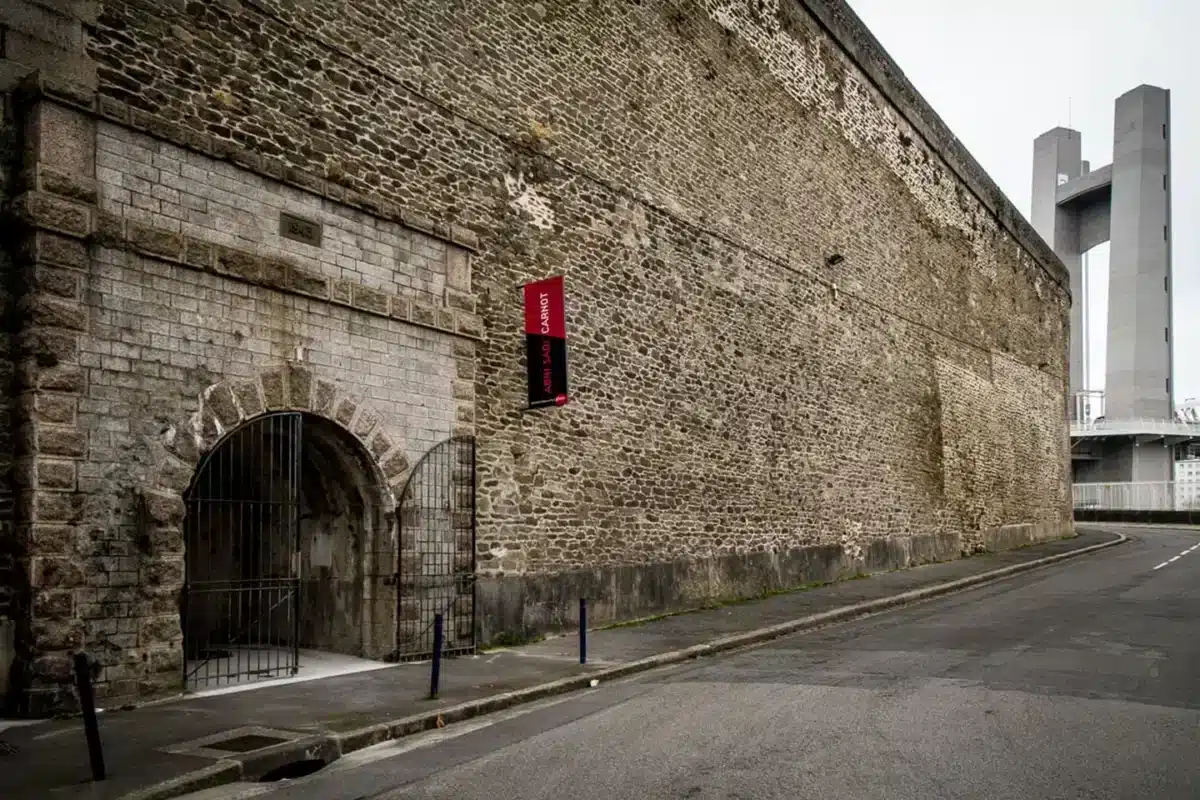
The map

Yachtsmen's charter : a guide to good practices on pontoons
The Brest marinas have started the year with a new communication support aimed at annual or visiting yachtsmen : the yachtsmen's charter. Available in several forms, it aims to remind people of good practices on the pontoons and around the marina.
A few gestures to live well together
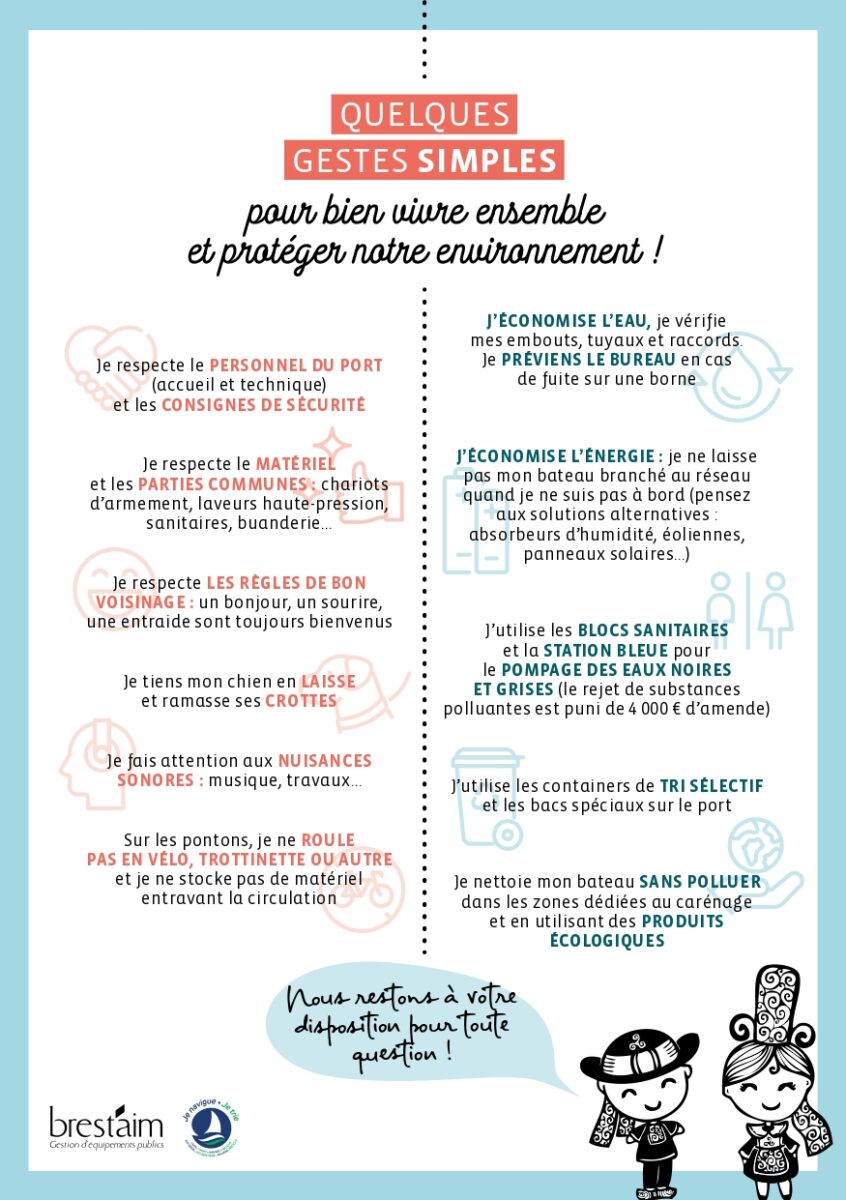
The yachtsmen's charter is available in the offices of Brest's Marinas, and is distributed to all new yahctsmen who obtain an annual contract. It reminds us of simple gestures to improve life on the pontoons and respect the environment.
Boaters will therefore find :
- Reminders concerning noise pollution or cleanliness of the premises
- Reminders about the safety of boats at the pontoon
- Incentives to make good use of port structures, such as the blue stations in order to preserve the environment.
This last point is particulary important given that Brest's marinas have been awarded the Clean Ports Active in biodiversity label
A charter in several formats
Yachtsmen will discover the charter in several formats, including a map reminding them of the good practices of life in the port at the top of the gates leading to the pontoons.
Discover the visuals here :
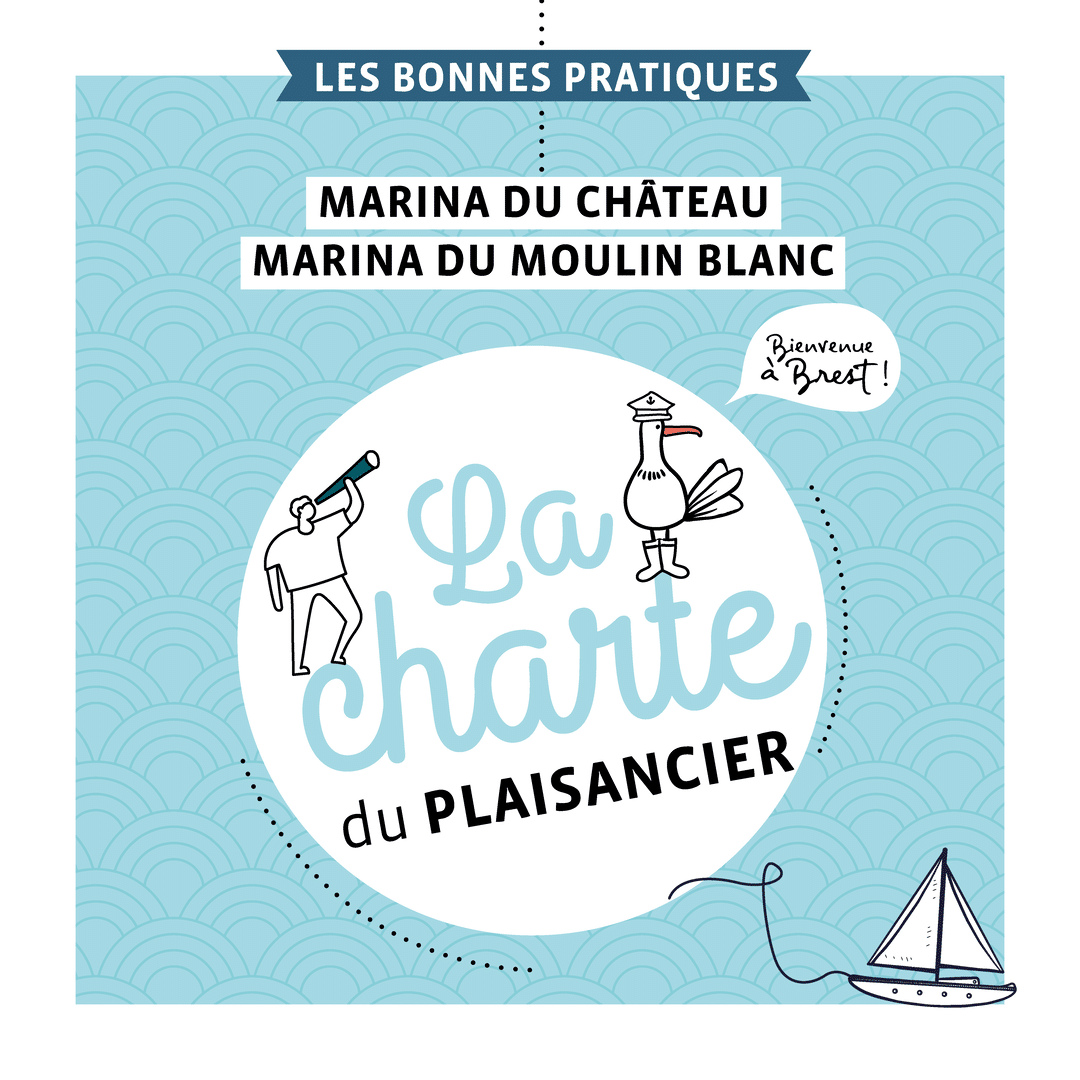
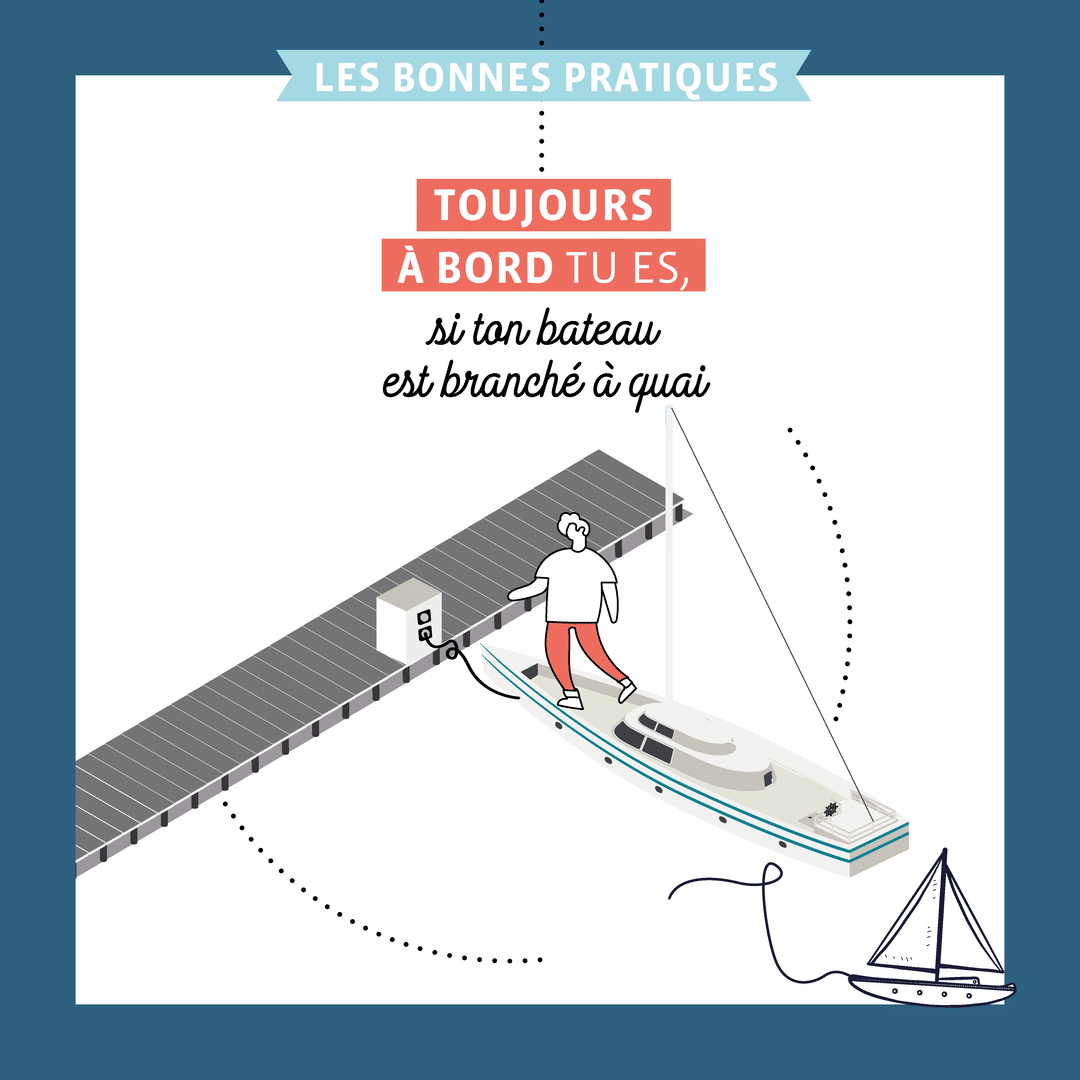
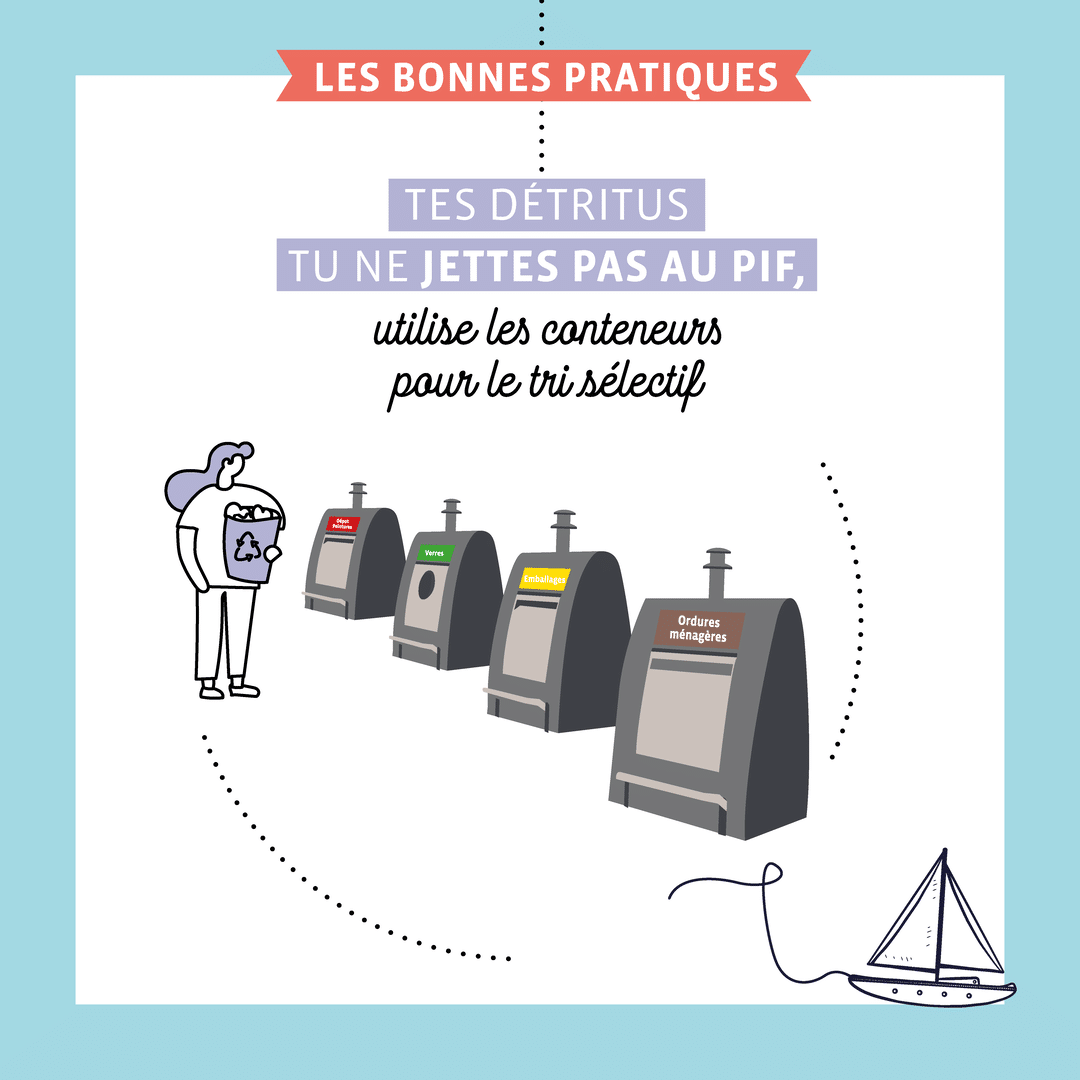
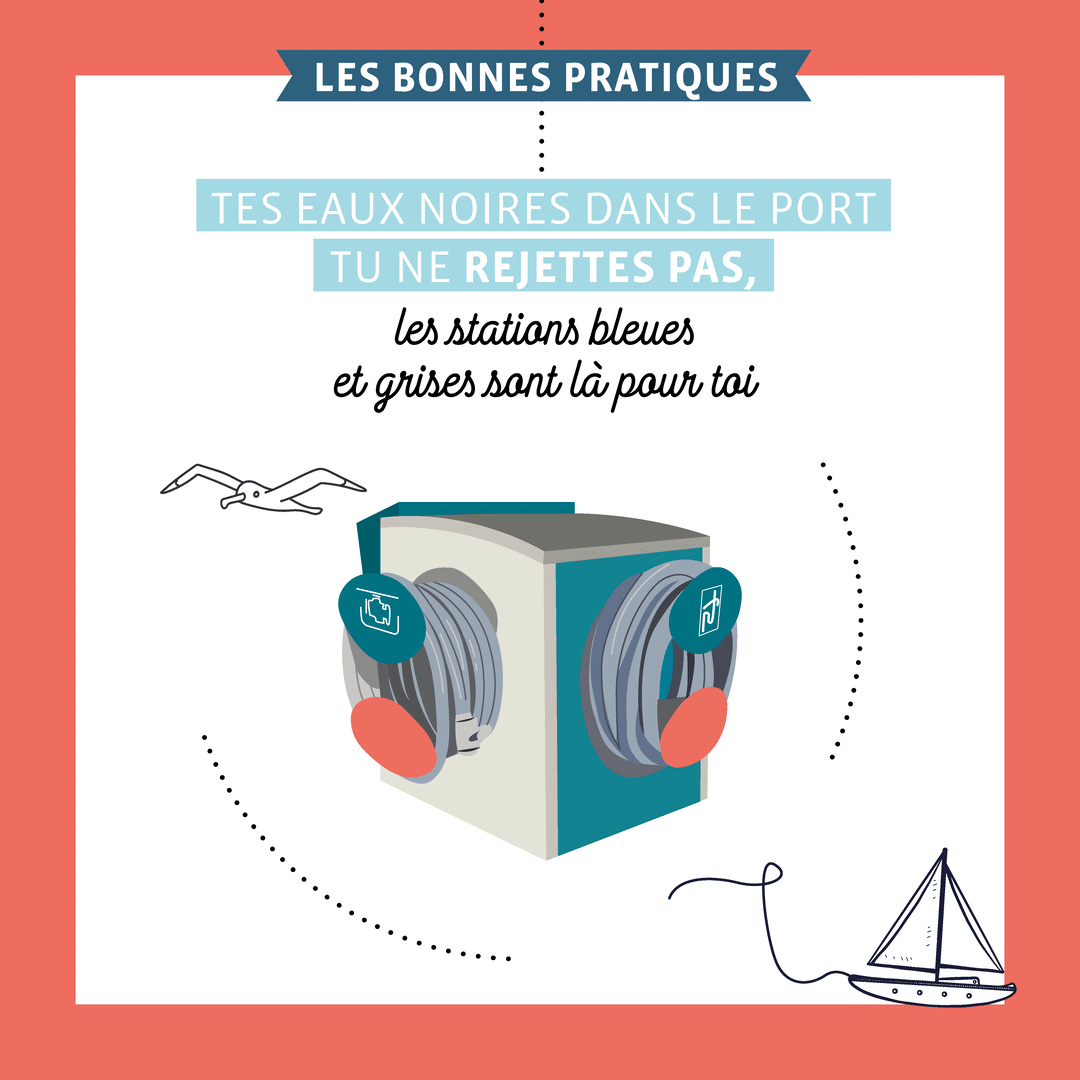
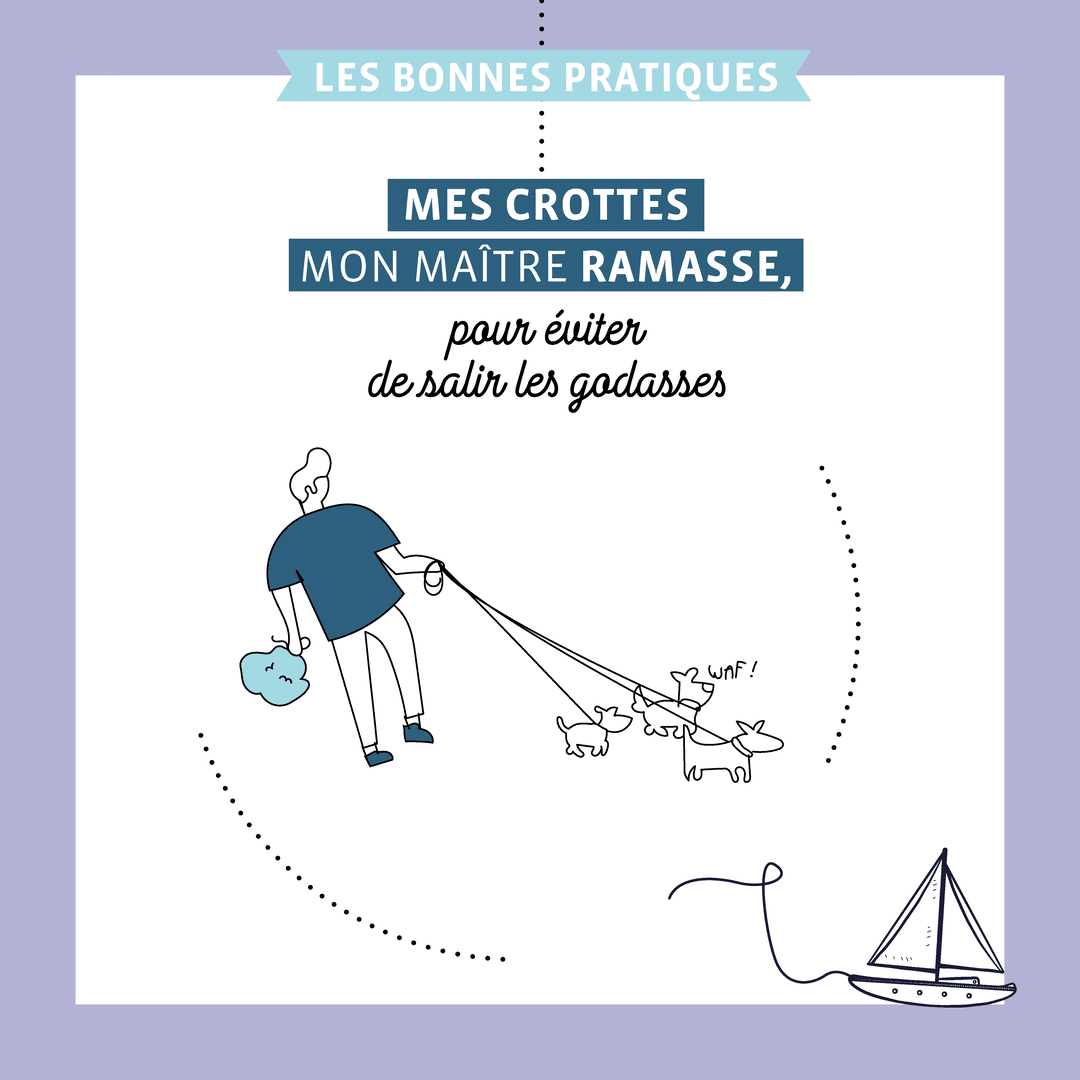
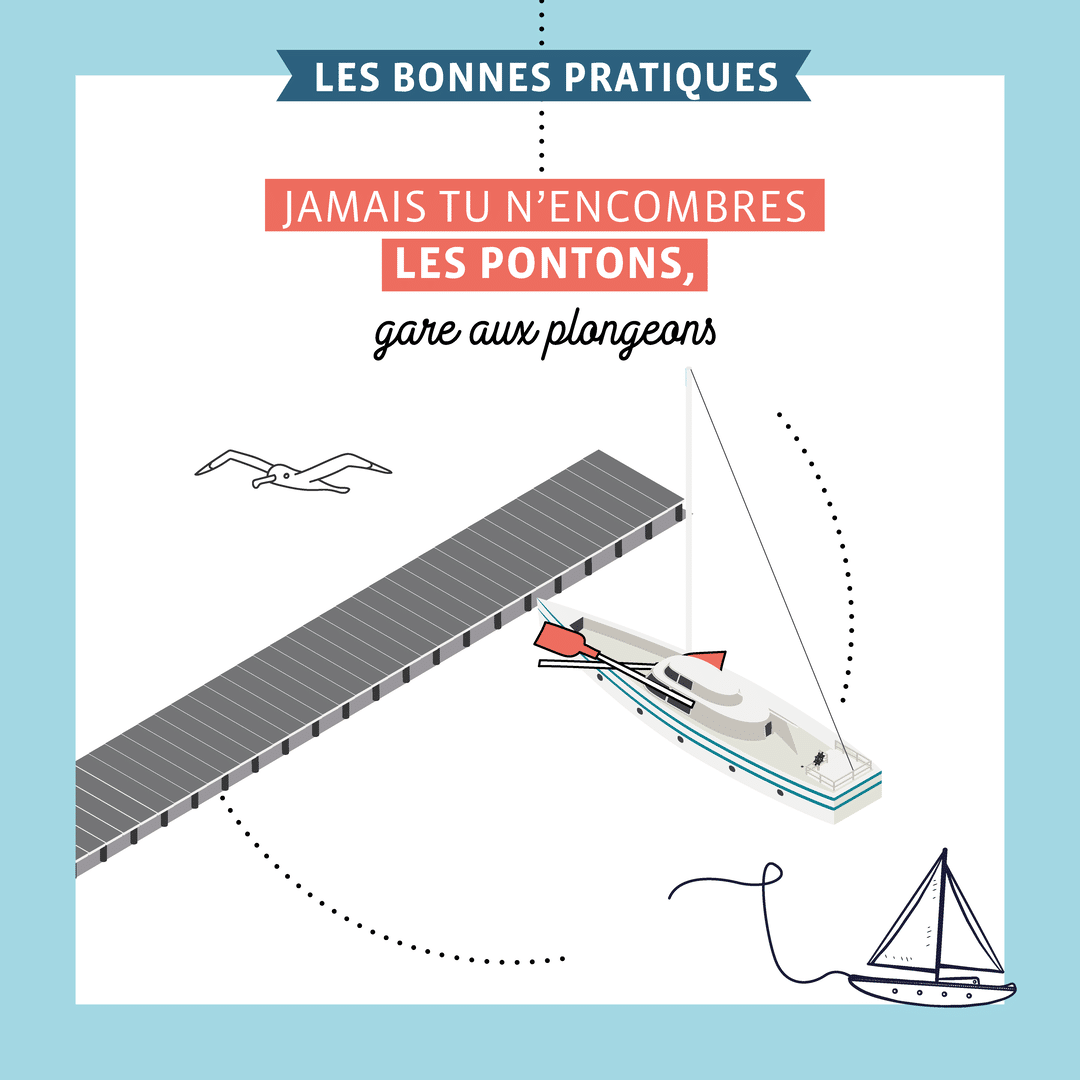
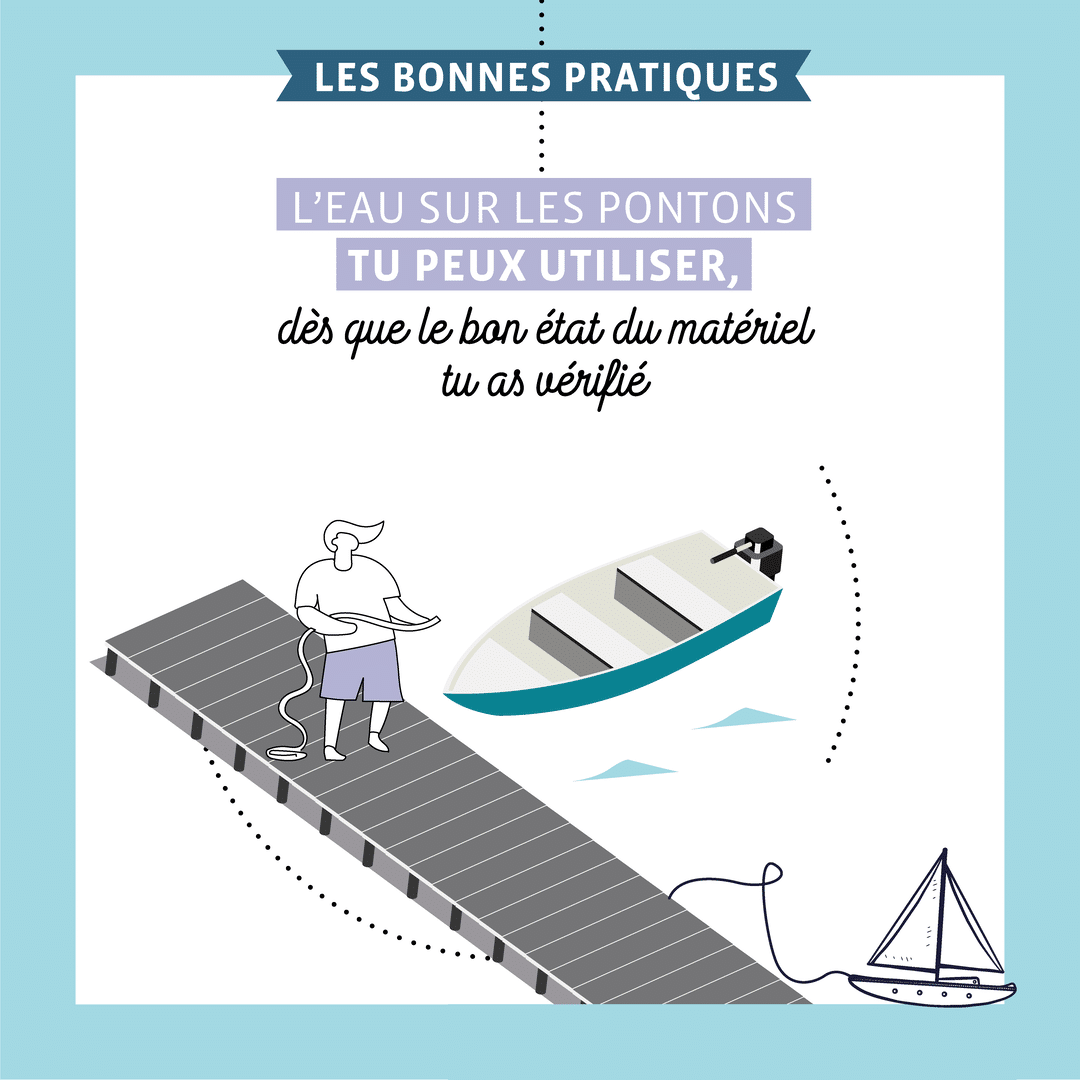
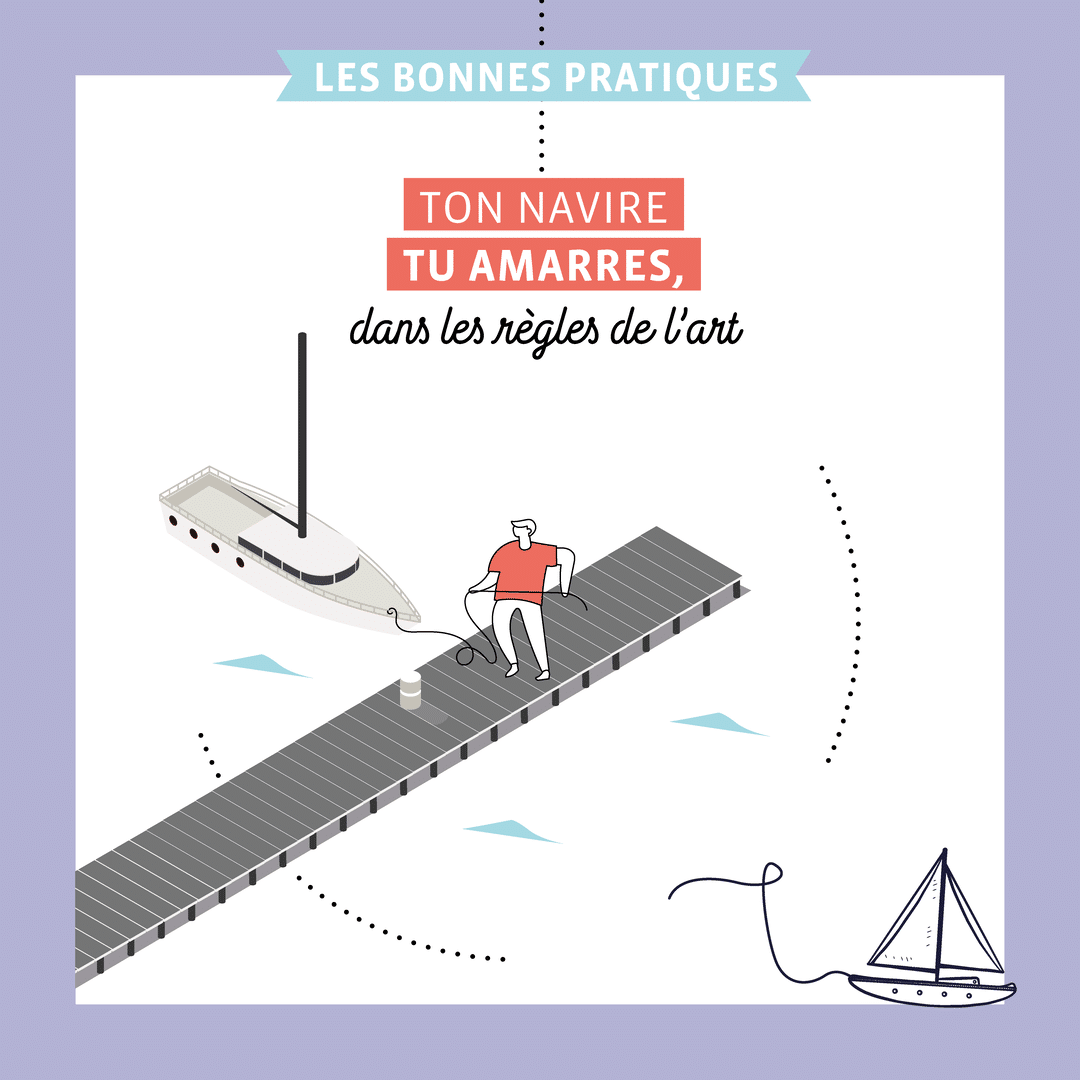
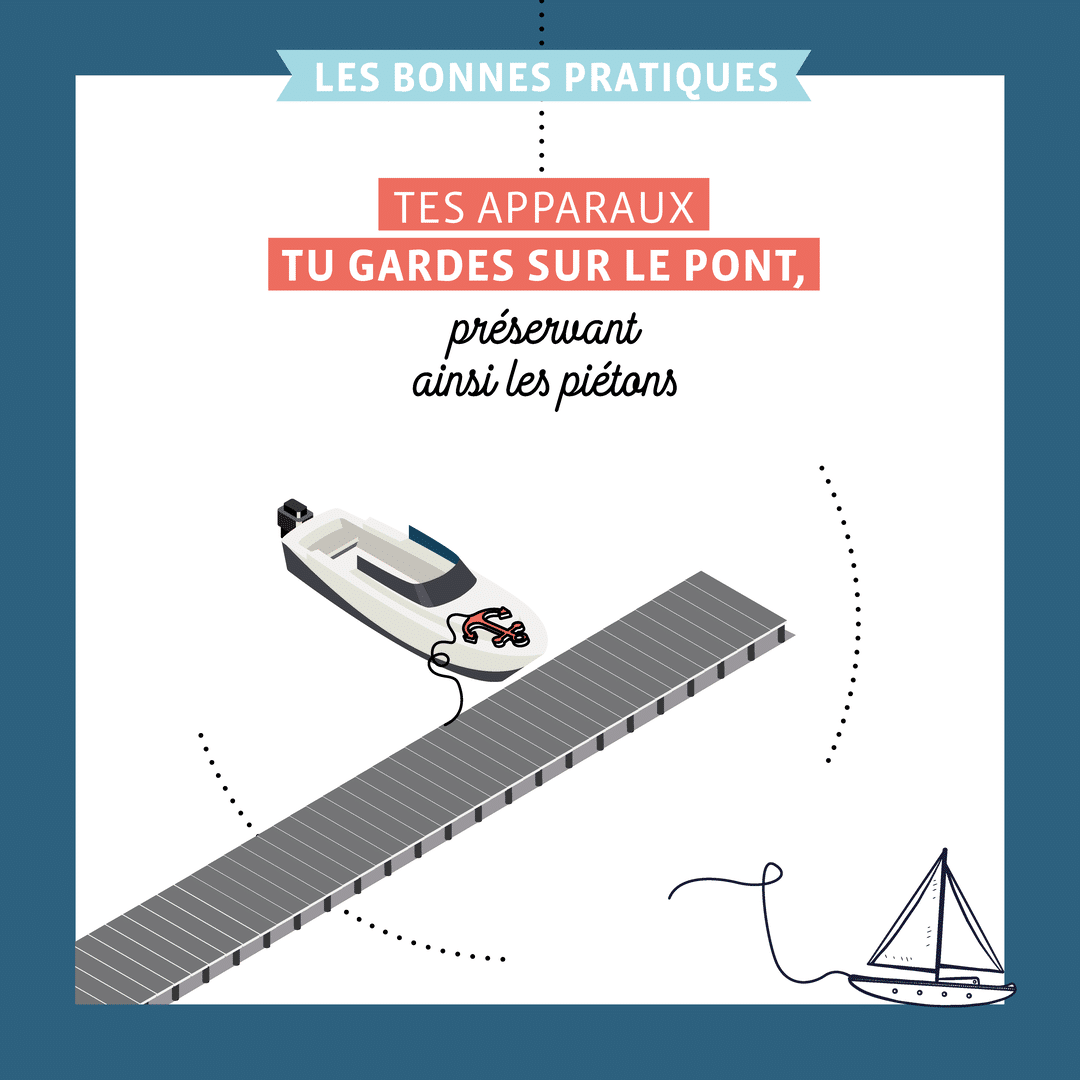
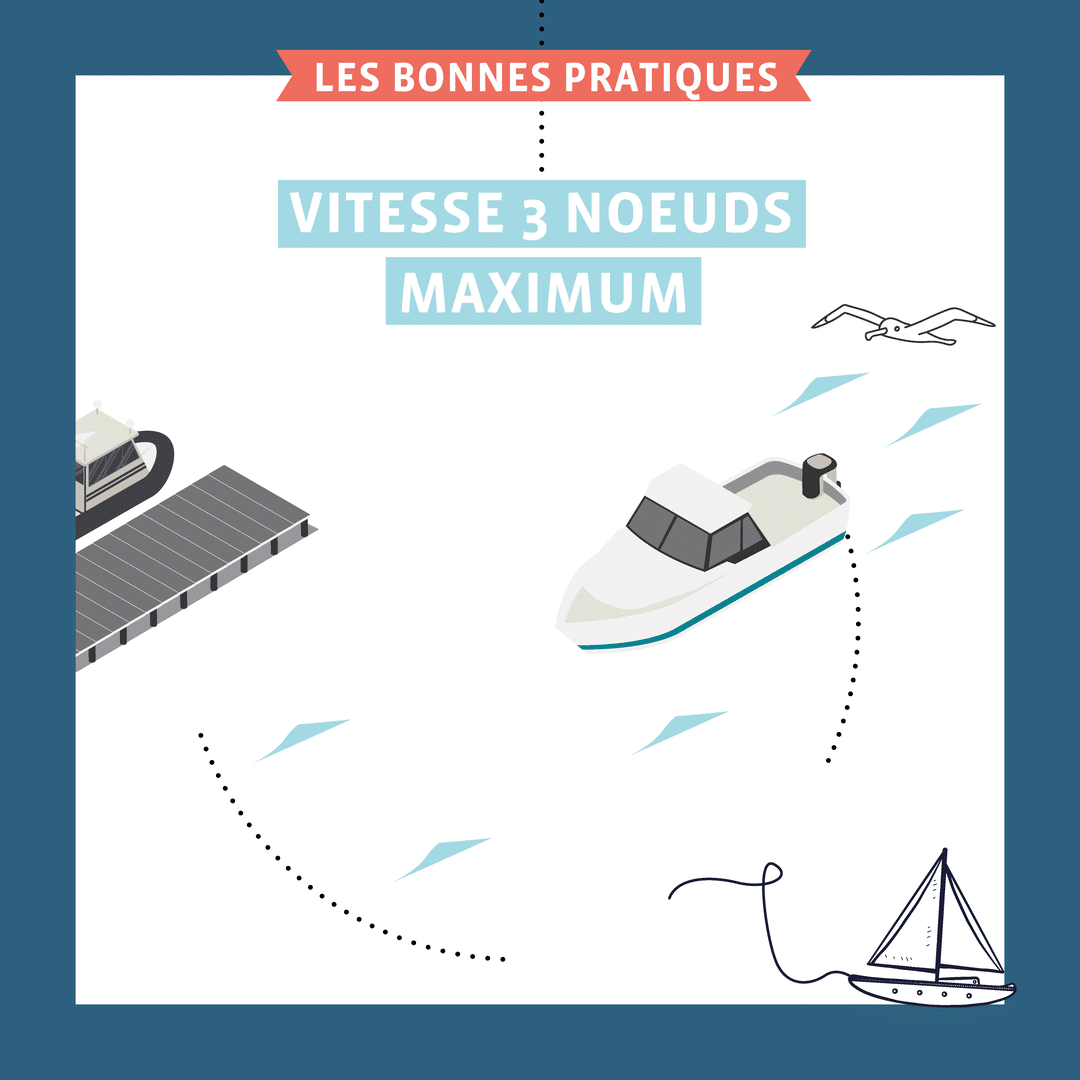
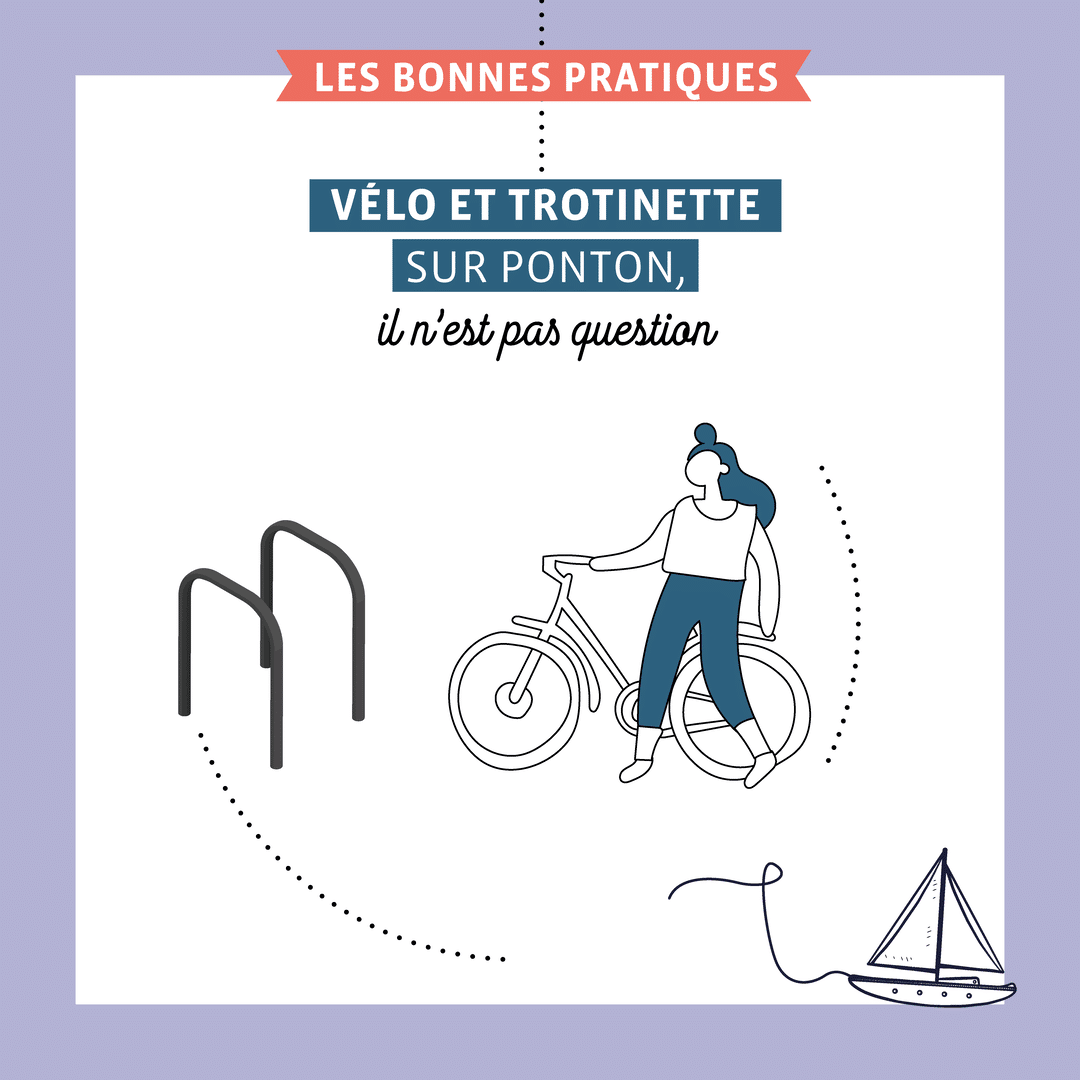
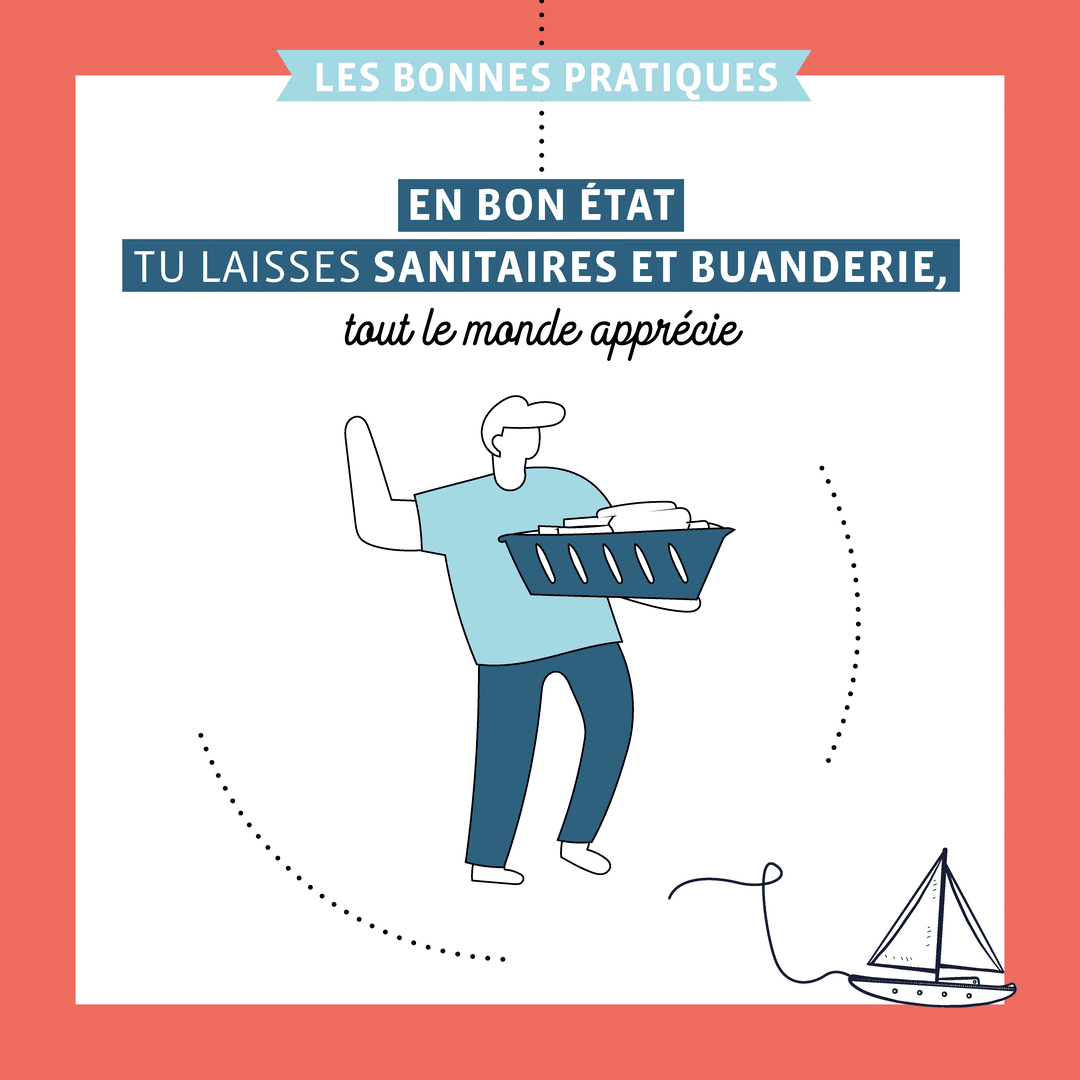
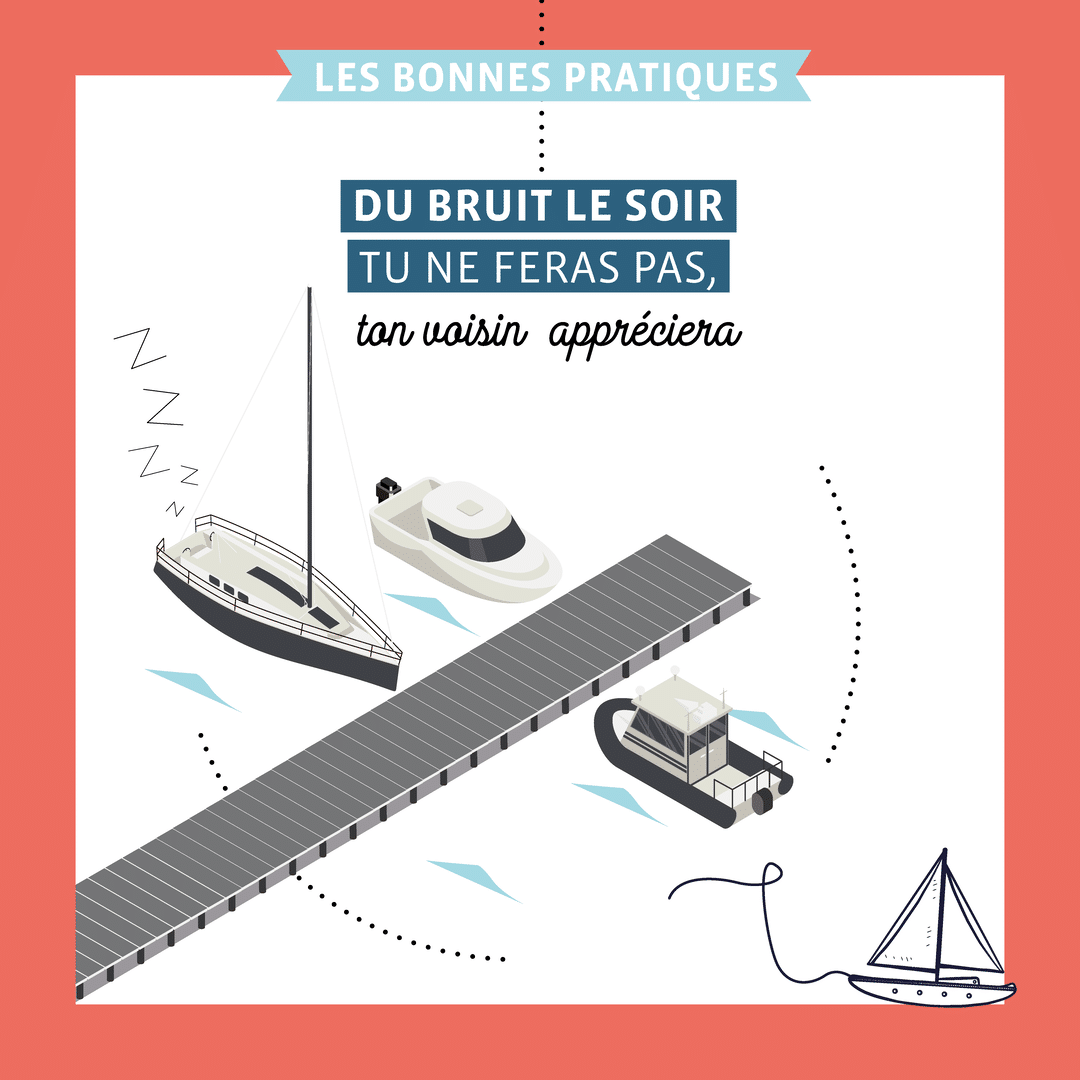
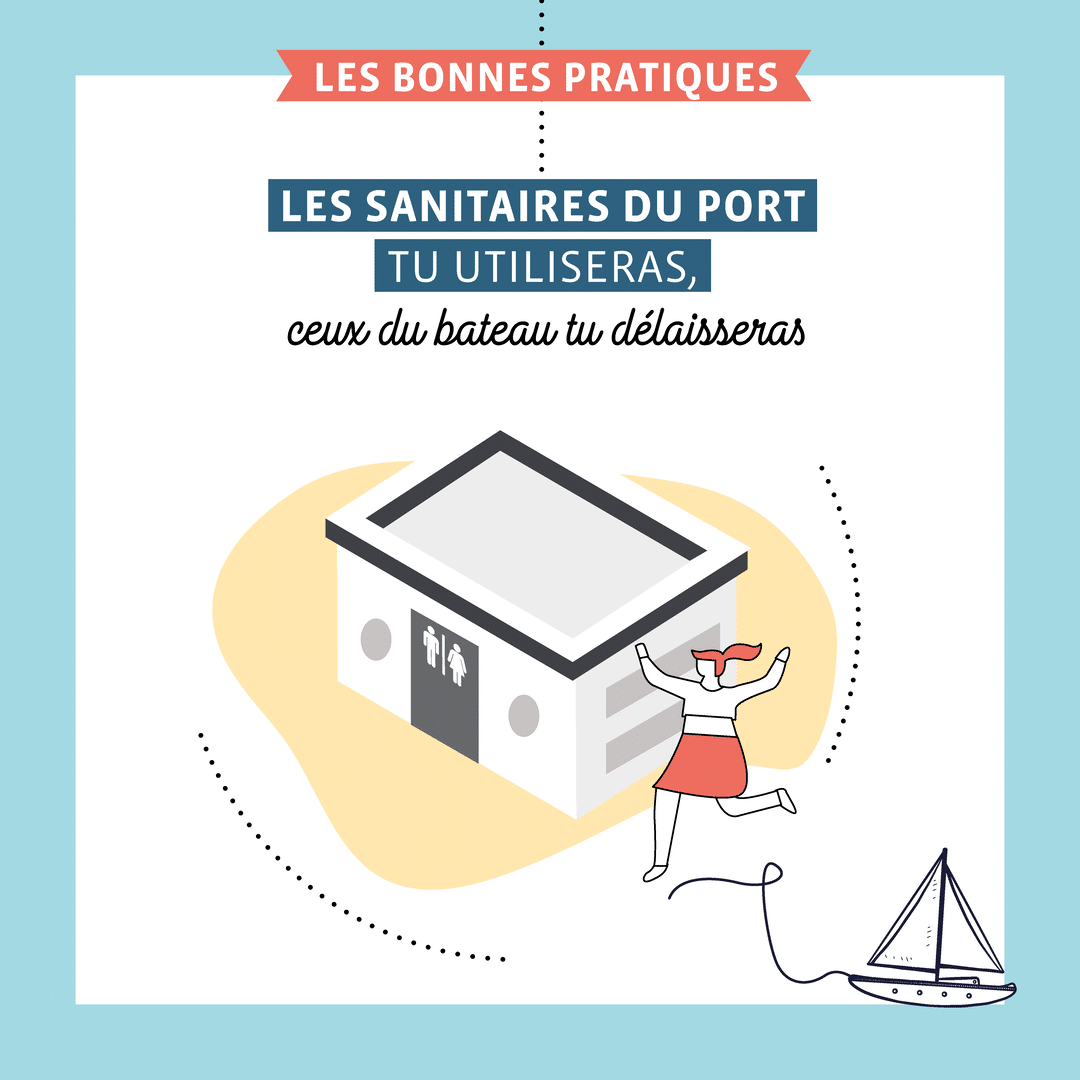
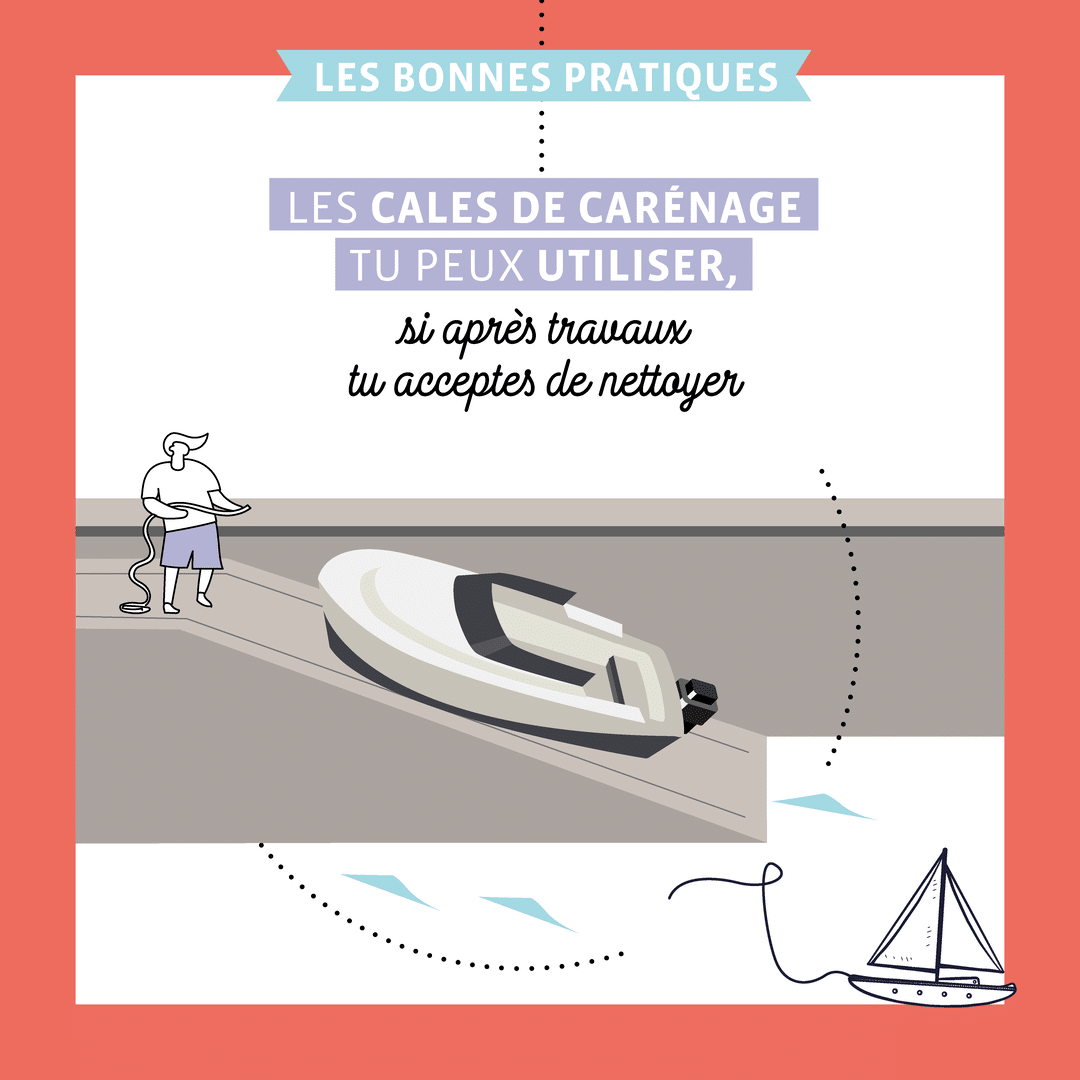
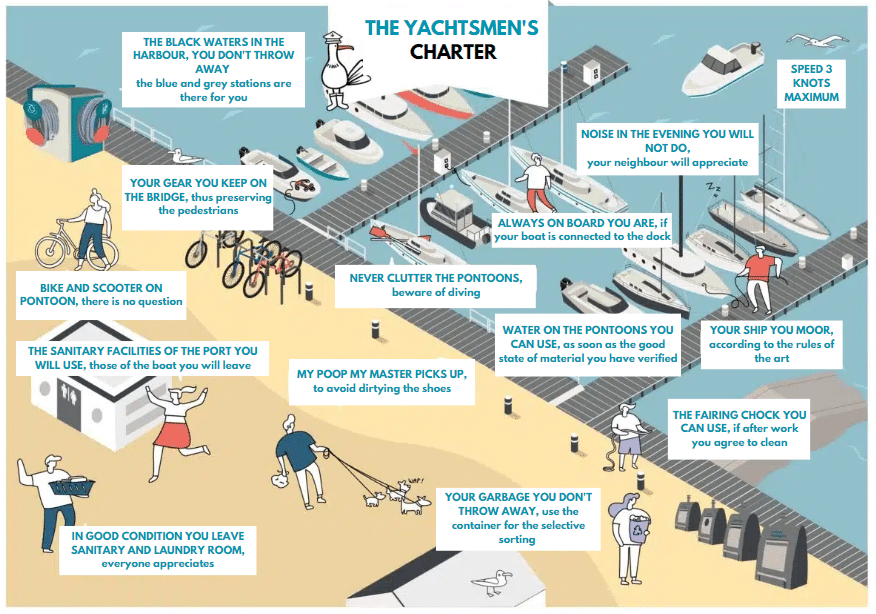
Clean and Active for Biodiversity Harbours Label Renewed
After two days of auditing, the Brest Marinas have been rewarded for their work by obtaining the renewal of the Clean and Active for Biodiversity Harbours certification (Ports Propres Actifs en Biodiversité). This certification is specific to marinas and validates the actions taken to limit the impact of the harbour's activity on the environment.
Clean and Active for Biodiversity Harbours Label
This European Certification (Ports Propres Actifs en Biodiversité) specifically concerns marinas and rewards their efforts for environmental protection and sustainable development. The approach is voluntary on the part of the marinas mangers. For this to happen, certain criteria must be met such as:
- have a trained staff who is familiar with procedures and equipment in the event of marine pollution;
- have a careening area with a system for recovering and treating polluted water when working on the hulls of boats;
- have a blue station for pumping out black and bilge water;
- have waste collection points, and containers for soiled products;
- have one or more sanitary blocks to avoid discharging grey water intor the harbour.
To date, 100 marinas have been certified as Clean Harbours, and 39, including the two marinas in Brest, have been awarded the complementary Active for Biodiversity label.
Actions carried out in Brest Marinas
Several actions are carried out in each of Brest's harbour such as :
- participation in the "I sail, I sort" action : a programme created in 2011 which is dedicated to the prevention of marine waste and aims to develop recycling;
- the sale of special absorbent sheets for yachting;
- free supply of pocket ashtrays, and the installation of MéGO! ashtrays, a company that collects and recycles cigarette butts, in the vicinity of each harbour office;
- the collaboration with Roscoff biological station, which regularly carries out checks on invasive species;
- the installation of rainwater harversters;
- the collaboration with Cedre, which tests the degradation and aborption of pollutants from certain waste products, and which has trained the marinas teams in oil spill response methods.
The teams of the Château Marina and Moulin Blanc Marina continue to carry out actions within the framework of this certification, and count on all the users of the marinas, from the yachtsman to the simple walker, to limit waste, discharges and protect the environment.
Fight against accidental oil pollution
Brest marinas teams regularly have to deal with small-scale pollution in the ports. To help them deal with this type of situation, Cedre provided them with two days of training in oil spill response techniques.
What is Cedre?
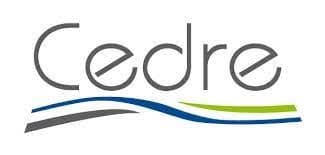
Located in the Moulin Blanc harbour, Cedre is an expert in accidental water pollution, from upstream preparation to the restoration of environments after accidents. It operates both in France and abroad.
Its missions are to provide expertise and advice to entities in charge of water pollution control. Cedre has also been mandated by the Ministry of Ecology to lead the network for monitoring macro- and micro-plastic waste on the coastline.
Cedre is also a training centre for professionals in the fight against accidental oil pollution. It is in this capacity that Cedre has intervened in Brest marinas.
Understanding accidental pollution in marinas
To keep the harbour clean, it is necessary to identify and understand the various possible pollutions in order to implement the right technical means.
The pollutions that we find most frequently in marinas are :
- black and grey waters;
- fuels;
- natural and urban outfalls.
Faced with this, there are difficulties in managing pollution linked to the environment:
- rip-rap, which is difficult to protect and clean;
- pontoons, under which pollution can go;
- boats moored to pontoons, which can end up in the middle of pollution.
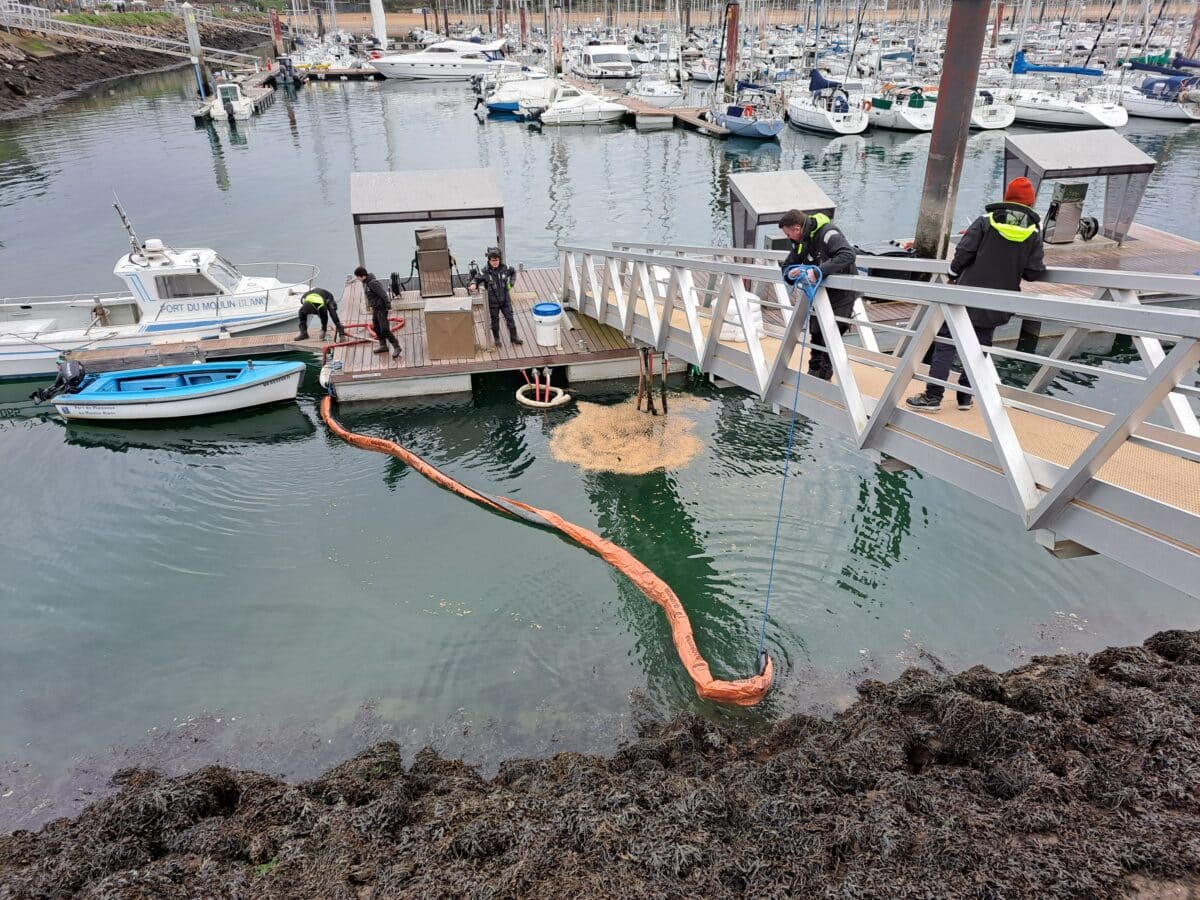
The port agents, supervised by Cedre trainers, were able to test different equipments in the Moulin Blanc harbour in order to learn how to contain and clean up an oil spill. The simulation on our infrastructures allowed the team to better understand the progress of such an operation, and to identify the elements of the site that could be problematic for the deployment of the different floating booms.
Rice husks were used to simulate a fuel leak.
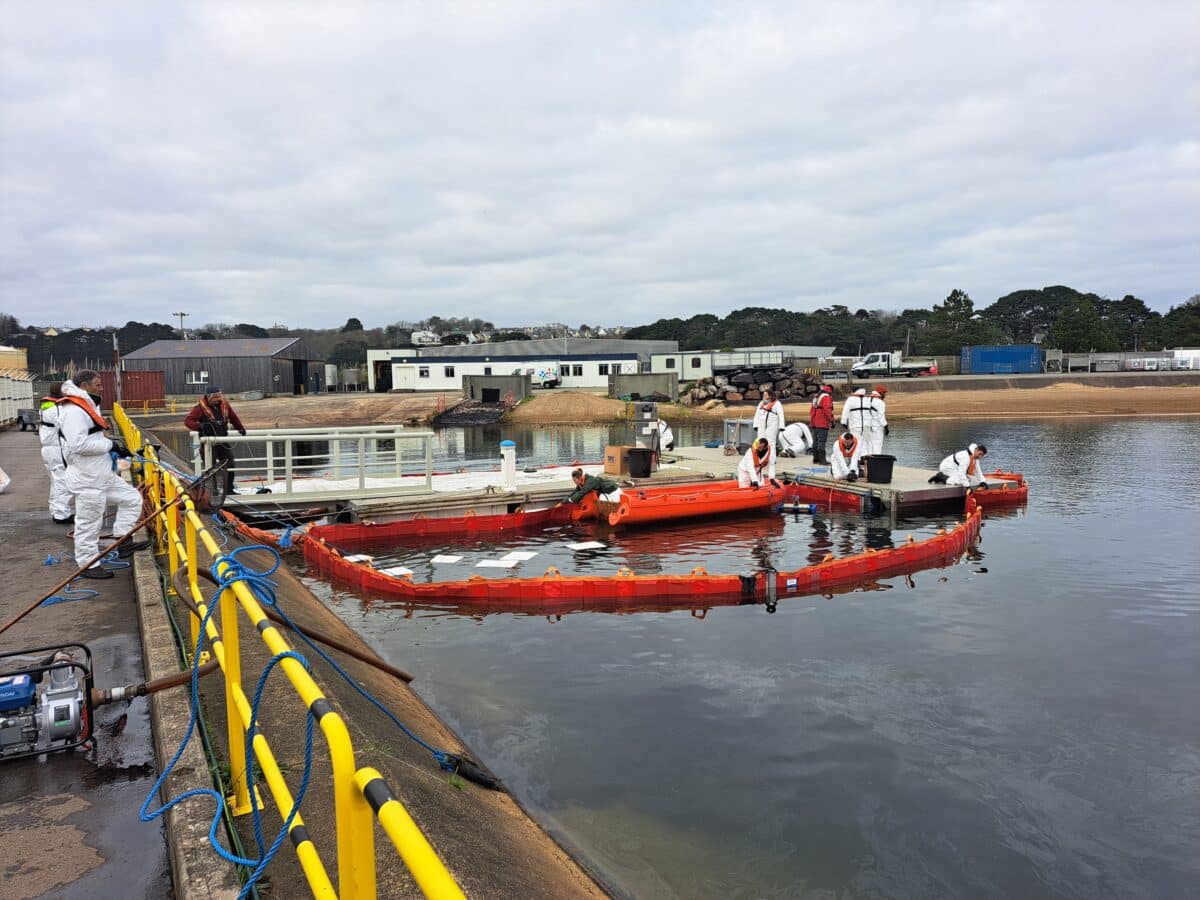
Cedre also has a technical platform where our teams were able to practice identifying sources of pollution, and handling the booms to contain and clean up the pollution.
What to remember about oil spill response techniques:
- floating booms are not 100% efficient, there will always be losses;
- diesel spreads very quickly, but evaporates in 24 to 48 hours;
- petrol evaporates faster than diesel. However, in the event of a large leak, the area must be evacuated as there is a risk of explosion;
- it is essential to identify the source of a spill quickly in order to be effective.
Equipments in Brest marinas to prevent pollution
The majority of pollution comes from ships moored in the port. These include ships that empty their bilges in the harbour, or those with overflowing fuel tanks.
To prevent boaters from polluting the marinas themselves, the Brest marinas provide various facilities:
- a careening area;
- a black water and grey water station;
- a fuel station with retention grids;
- a waste disposal centre with containers for soiled products;
- a rubish dump at the top of the Moulin Blanc careening dock.
In addition, boaters will also find underground containers for household waste, cardboard and glass. Ashtrays have also been installed along the Moulin Blanc promenade and near the sanitary facilities in both harbours.
Brest marinas have been awarded the Ports Propres Actifs en biodiversité label (Clean and Active for biodiversity Harbour Label) thanks to what have been put in place to protect the environment. But to go further in the process, it is necessary for everyone to make an effort by systematically using the equipment available.


 Warning, you are using an insecure browser!
Warning, you are using an insecure browser!